the magdalen
for students, by students

@themagdalenmag The Magdalen Magazine Join our team! If you're a UoD or Abertay student and have a passion for design or writing, we’d love to hear from you! The Magdalen Magazine @themagdalenmag www.themagdalen.co.uk with us online! Connect
Happy New Year, and welcome back to semester 2! I hope you all had a great winter break and are ready for more university, or more importantly, more Mags!
Starting from this issue, I’m delighted to introduce you to our new Creative Directors, Katy Blair and Fiona Howard. Katy and Fiona will be not just in charge of our 100th issue’s design, but will also have the grand task of entirely redesigning the Mag over the summer, from issue 101. I’m sure you all agree that you’re excited to see where Katy and Fiona take the Mag next!
This issue’s theme is “Begin Again: refresh, restart, renew”. Yes, it is a Taylor Swift reference. On a Wednesday, in Pavement Café... watch a new year begin again. Hope you enjoy!
Messages from the Senior Team


Hey, fellow creatives it's Katy & Fiona! We are delighted to be the new Creative Directors of the Magdalen this year. We hope to make it the best we can, so to all our creatives feel free to contact us with any problems or inquiries. We have loved making this volume of the Mag, and although it has been a huge learning process, we want to thank all our Designers and Illustrators who have made this issue possible.
Thank you for all your hard work it’s been amazing seeing all of your pages. We are sad to say goodbye to our previous Creative Directors- Phoebe and Livvie we hope your dissertations went well and that the rest of 4th year isn’t too daunting, we know you can smash it! xxx
- Dani ✨
- Katy & Fiona ❤
Creative Writing
Arts & Entertainment Can we really “remake” our world? Kafkaesque Diagnosing the ‘Literally Me’ Movie Collection: Incel Propaganda or a Letterboxd Cry for Help Review – All Quiet on the Western Front First Impressions Spoiler-Free Review: Pokemon Scarlet & Violet Review: A Plague Tale: Requiem 10 12 14 16 18 20 Feature 'Tonight, I'm going to reset my chemistry': A Story of Transition and Self-Love 06
Table of Contents
Take, Take, Take Venus The Butterfly’s Playground Blue Light Trevor 22 24 25 26 27
Special Feature
The Spoils of a Crisis Mental Lag in the Modern World Florida Governor DeSantis’ Candidacy Is No Longer “Hot” Will Ethiopia Ever See True Security? Think Tanks: Our Shadow Government 32 34 35 36 The Magdalen's advice column. Got a Question? Ask us! DUSAsk 38 Dundee University Participation Society Claiming Our Futures Society Spotlight 40 41 Lifestyle 42 44 46 Phoebe's Gyoza for the Lunar New Year Little Model Highlands Changing with the Seasons Valentines Adventures Society Guides: The Management of a Society 52 54 Opinions You’re Not Bored, You’re Boring Dundee, City of Discovering… What? What Sobriety Taught Me About My Twenties Third Time’s the Charm Privilege in Education Labels and their (in)significance 55 56 58 60 61 62
& Technology Into the Depths: The World of Saturation Diving PTSD, Psychoactive Substances, & Brain Plasticity Solar System Colonization: Beyond Earth Robot Bees and the Future of Pollination A Game of Shadows! 64 66 68 70 71 Doing The Dishes 3AM Redecorating The Pigeons and the Falcon 28 29 30
Current Affairs
Science
Remembering Vivienne Westwood 72 On/Off Campus Community Action Forum: Campaign Progress End of An Era? Dundee’s Shifting City Centre 48 50
‘Tonight, I’m going to reset my chemistry’: A Story of Transition and Self-Love
In the opening of the video game Fallout New Vegas, the player dies. After a short monologue, from the game’s antagonists, the player is shot in the head and left for dead. Once the character is found by a robot cowboy, they are brought back to life by a doctor, then character creation begins. In short, you die and then decide who you are. You have no memory of your life before your death, so you travel the Mojave Wasteland, in the hope of figuring out who you were before your death, and who you are now, after your rebirth. Fallout New Vegas is widely considered to be one of the best games ever made, and perhaps the best open world RPG (role-playing game) of the modern era. In online trans and queer spaces the game is also something of a meme, with love for the game being touted as a sure sign that a person is in fact trans femme. Apart from the game being excellent – and trans people having impeccable taste in general – I believe its
popularity with trans people is largely because the events of the game mirror the process of transition. The process of transitioning is one of deciding who you are now, and rediscovering who you were before. My own decision to begin my transition was in some ways a death: I killed the old me, and scoured his name from the earth. But more positively, it was a decision on my part to be reborn; to go on a journey through this world, learning who I really was and creating who I am now.
I began my transition just over a year ago. It began slowly at first, I tried out a new name with friends and dressing femininely in private. While these steps are pretty innocuous, I did not take them lightly, they were prompted by a crisis in my life. Every night, I would lie awake in terror at the life path I was on, I knew that if I continued down this path, by the end of the decade I would be a well-paid professional and
Feature 06 Words: Arrowyn Williams
a husband. And that terrified me. I let those feelings of terror and dread build up inside of me, until I couldn’t deal with them properly and they erupted in an unhealthy way, which meant that I ended up hurting the people that I love. I wish it could have been different, but I let things get to the point that they couldn’t be. It came as a consequence of my own inability to deal with those feelings, and to the people that I hurt, I’m sorry.
The past year has been hard in so many ways. My personal relationships have changed. My relationship with the state has also changed. I have spent hundreds of hours and thousands of pounds on my transition. It has required a huge amount of physical and emotional effort. Outside of my transition, the rest of my life has seen a lot of pain and tribulation; it has been the hardest twelve months of my life.
But being trans isn’t about pain, and neither is transition. It’s not about being tortured by who you are, or about inflicting pain on yourself to ‘fix’ a broken body, nor is it about throwing your life away. Transition is not a girl wearing a dress, crying in front of a bathroom mirror. Transition is a rebirth, it is an act of renewal, an opportunity to start again, and it is a chance to be who you want to be. Transition is about self-love and self-determination. About taking mastery over your own life and your own body. It is about deciding that you are going to do what makes you happy, even if you live in a society that disapproves of this happiness.I didn’t transition because I was in pain, I transitioned because I wanted to. And it was the best decision I ever made, my only regret is that I didn’t do it sooner.
07 Design: Fiona Howard Feature
The pain of this year has only affirmed my decision to persist in the fight to be who I want to be. If I had to be Arrowyn during those moments of pain and hardship, then I will be Arrowyn in every moment of happiness, every moment of love and every moment of laughter too. And my life is so full of love, happiness and laughter: I have the most amazing friends, who have loved and supported me throughout every step of my transition, they have been there for me throughout the pain and the joy. I especially want to mention my two best friends, who showed me how to be happy and showed me what transition really was, and whose gentle ribbing of my sense of style eventually lead to my ‘egg cracking’ and the beginning of my transition. To A & A, I love you both, thank you so much for everything.
However, being trans is not merely a personal thing. Transition is an intensely political act. Politicians who are supposed to be our representatives in a democratic society scaremonger their voters about trans people and the process of transitioning. Trans people are declared a threat to women, and to children, by the British press, and transition is framed as the forced medical conversion of gender-non-conforming youth. Basic changes to administrative law, such as the recent Gender Recognition Act reform in Scotland, are heralded as the end to women’s rights, and a licence for men to commit acts of gendered violence. Additional administrative burdens are put on trans people to live in dignity that are not there for cis people, and what little legal rights we do have are continually under threat by politicians looking for scapegoats. The NHS has criminally long waiting times for medical care for trans people: the medical institutions that are supposed to provide us with medical care, deprive us of it instead. Medical treatments that trans people are denied or forced to access through dehumanising means, are given to cis people with relatively little hassle. Every year trans people die waiting for the care that the state had denied them.
Some people might see this and think that trans people are brave for choosing to transition in such a hostile world. But I am not brave. My transition wasn’t a result of me summoning all my courage and acting bravely.
“If you want to be a girl, you can just be a girl. If you want to be a boy, you can just be a boy.”
08 Feature
Words: Arrowyn Williams
No, my transition came about because I was terrified. Terrified of not living my life, and eventually withering away. I feared that if I didn’t make the change that I needed to in that moment then I would never be able to, and that if I didn’t transition, eventually, I would drive myself into destructive behaviours. I was terrified that if I didn’t transition it would kill me.
I now need to write something that would have been useful for my younger self to hear: if you want to be a girl, you can just be a girl. If you want to be a boy, you can just be a boy. And if you don’t want to be either, you don’t have to be. Nobody gets to decide your identity but you, and anyone who tries to, is wrong. They may think they are doing it out of love, or out of compassion, but they do not get to decide that their love for you means they can control you. It is your life, and yours to live. And the choice to transition is the choice to live. Someone once told me that I was throwing away my life, but they were wrong and it doesn’t matter why they felt the need to say that, because for the first time, I’m living my life, the way I want to.
I look back on this past year and I see how I have changed. I have significantly less facial hair than I used to, my skin is softer, my hair is longer than it has ever been (and is currently purple), I cry so much more easily now, I’ve discovered a love for EDM and fashion, my breasts have begun to develop, and my voice is softer and more feminine. Each of these changes represents a step I have taken; laser hair removal, hormone replacement therapy, voice therapy, and personal exploration. Transition has been hard, but each difficult step has made me happier and I can’t wait to see myself change even more.
For a long time, I felt like I was in a void, like I was in a deep darkness with no end. I felt like this void separated me from my body and from parts of myself, and that it alienated me from other people. I thought that maybe a lot of people felt that way, that the alienation of modern life was simply taking a toll on me, as it has on many others. So I tried my best to ignore the void. I threw myself into hobbies, my friends and into the pursuit of joy. I tried not to look into the void, but over time the darkness grew around me and became impossible to ignore. I was scared, but I stared into the void and the void stared back. But when I saw it, I realised that the void wasn’t something that surrounded me, it was a part of me. I looked deep into it, and as I began to embrace this new part of me, I realised it wasn’t dark, it wasn’t frightening . . . it was beautiful. I realised that it didn’t matter if people thought I had fallen to the darkness, or that I was terrifying. I knew that life could be beautiful. I just had to reach out and take it.
Feature Design: Fiona Howard 09
Can we really “remake” our world?

Arts & Entertainment Words: Chelsea Dalscheid 10
I recently visited an exhibition at the V&A design museum in Dundee called Plastic: Remaking Our World which The Courier defined as a “groundbreaking new exhibition”.
The exhibition is categorised into seven rooms, each of them presenting a different theme as well as a different time period for the visitor to explore. In the “Plastic Lab” one is first confronted with panels displaying shocking numbers concerning the negative impact of plastic on the natural world. For instance, one thousand tonnes of plastic are thrown into Scottish seas each year, which equals the weight of nine blue whales, or the fact that Scottish people use 694 million plastic bottles a year.

As you move on to the next room, a cinematic, dark and immersive experience awaits you. Two films are projected onto opposite walls, comparing the untouched and natural world of how it used to be two billion years ago, before human intervention, to now. Plastic industries are overtaking the market and their litter creates whole dumping grounds bigger than football fields. Due to the expansive size of the screen, I felt like I was in the tip myself drowning in the never-ending plastic.
However, in the adjacent rooms you experience the ages when plastic was a new invention, used in almost all sectors of life: the medical sector, space exploration, architecture and your own home. It is called the “age of petromodernity”, situated in the 1960s. Furthermore, you are also visibly shown how much plastic you use in your day-to-day life without even knowing. From when you wake up, picking up your phone, brushing your teeth, until you go to sleep and shut down the TV, you are in contact with plastic.
The glorification doesn’t stop there. The ‘Monsanto House of the Future’ was built as the ideal futuristic home, fully made of plastic, an innovation in the late 50s. It was an attraction in Disneyland’s Tomorrowland California until the late 1960s, which marks the dooming period when marine biologists first raised awareness to plastic traces found in the oceans. I liked the feeling of dramatic irony in the room, since modern viewers are already aware that the positivity towards plastic is going to shift quicker than expected.
The last room, simply titled “Re-“, acted as an awakening to me. First of all, it was the brightest room I had seen in the whole exhibition. Secondly, it presented a lot of substitutes to plastic which are more sustainable and better for the environment. It showcased backpacks made out of banana fibres, glass bottles and refilling stations, reusable bags, something I was already familiar with. What caught me more were the different elements of plastic they had picked out from everyday clothing, like labels, shoe insoles or the inner lives of sneakers. Along with the diagrams about which countries are best at recycling and which treat waste the most sustainably, this last room is an eye-opener; comparing one’s home country with another either results in a sense of hope or dread, considering how evolved their waste treatment is.
As an avid art and environment enthusiast, I would recommend this exhibition to anyone interested in the evolution of plastic and its quick fall from glorification to demonisation.
11 Illustration & Design: Chloe Dickson Arts & Entertainment
Kafkaesque
“Then birds flew up like corks out of a bottle, I followed them with my eyes, saw them climb in a single breath until I no longer thought they were rising, but that I was falling, and, clinging on to the ropes in my dizziness, I began involuntarily to swing a little. Before long, I was swinging harder, the breeze had grown chillier, and quivering stars had replaced the birds.” (excerpt from Children on the Road)
In two sentences Kafka paints a dynamic transformation of day into night. Within that transformation is embedded a mystical experience that continues unfolding in meaning with each added phrase. Abstract thought takes on the shape of physical objects and metaphysical atmospheres are suspended in natural landscapes. The long and convoluted sentences take you on a unique journey that culminates in a gorgeously satisfying ‘end of scene’.
Sometimes the journey is a deep frustration untangling into a joke.
“... if one could divide life into minute constituent particles, and judge each individual particle separately, I am sure each little particle of my life would contain some irritant for her.” (excerpt from A Little Woman)
Sometimes the journey is an appreciation of the beauty in such simple things as harmony.
“If you mix your voice with others’ voices, you feel as though you’re caught on a hook.” (excerpt from Children on the Road)
No matter what human experience Kafka is trying to capture, it’s never only a description. It’s an invocation of that experience, it’s a revisiting of little moments of meaning and
adding more layers of significance; like a signature on the work of art that is life. You’re left with a collection of images which are being replayed in your mind like a gif, stored away in the form of a Kafkaesque meme that is much more relatable and adaptable to your own idiosyncratic human experience than realism could afford.
There is something very alluring about that lucidity despite, or maybe because of, the convoluted expression. This contrast keeps you invested and leaves you wanting more because even though there is no absolute answer as to what it all means, it cannot be regarded as meaningless. It’s about our shared, collective conscious and unconscious. You’ve felt it. You’ve thought it. You’ve been through it. And maybe one day you’ll be able to put it into words in a way that will make someone else want to write unnecessarily convoluted sentences to share their excitement about it.
Who knows why Kafka wrote but it seems that his words are brimming with an anxiety to express oneself and catalogue life, collect moments, release the tension of confusion through language. It seems as if he himself was always seeking deeper understanding. Nevertheless, the meaning slips away in between his lines and is never firmly defined.
“A long time ago, he had determined to observe everything absolutely precisely, so that nothing could take him by surprise, whether from behind, or from above, or wherever. Now he remembered this long since forgotten resolution and quickly forgot it again, like someone pulling a short thread right through the eye of a needle.” (excerpt from The Judgement)
Arts & Entertainment
12
Words: Mihaela Denkovska

Arts & Entertainment 13
Design: Jack Stamp
Diagnosing the ‘Literally Me’ Movie Collection
Incel Propaganda or a Letterboxd Cry for Help
If you’re like me, your social media is filled with clips from American Psycho or Taxi Driver, with satirical captions detailing how the miserable main character is ‘literally me’. Or clips of Ryan Gosling in Drive or Blade Runner 2049, accompanied with a caption about how scary women are. On Halloween, I saw three Tyler Durdens, six Patrick Batemans, two Travis Bickles, and a Driver (from Drive).
What happened? Why are these films being used as a moodboard for strange men online,
detailing how miserable or uncharismatic they are? What connects these movies? While many films are in the ‘literally me’ movie collection, I shall focus on Drive, Blade Runner 2049, American Psycho, Taxi Driver, Fight Club, and Joker, as these are most strongly associated with the collection.
Five of the six films feature sub-themes of mental health, and Blade Runner 2049 creates a status adjacent to mental illness. The collection does not use mental health as its

14 Arts & Entertainment
Words: Samuel Blood
main focus, it is a sub-theme. American Psycho is about superficiality, Blade Runner is about how we project our desires, Fight Club is about hyper-masculinity.
Related to sub-themes of mental health, are themes of loneliness. All movies within the collection feature the protagonist either struggling with loneliness or desiring to be alone. The nature of our characters’ isolation varies. In Fight Club and American Psycho, the protagonists use violence as a substitute for affection. Drive and Taxi Driver use violence in search of affection. Joker and Blade Runner use fantasy as a substitute for affection.
All six movies feature a male protagonist, although only Fight Club and Taxi Driver are about masculinity.
As mentioned above, many of these satirical posts mention experiencing difficulties with women. While specifics of how these characters interact with women vary, from serial killings to using a hologram to imitate one, all six films feature difficulty in interacting with women. Interestingly, in five of our six identified movies the protagonist mistreats women. Sexual frustration also features in three films: Fight Club, Taxi Driver and Blade Runner 2049 Does the ‘literally me’ collection appeal to incels?
While features of violence and misogyny indicate it may, these movies are usually critiques of the protagonists’ lives, and their attitudes towards women. Taxi Driver, which most closely resembles a ‘pro-incel’ film, follows Travis, who is influenced by mental illness, sexual frustration, masculinity and his violent clientele to enact vigilante ‘justice’. The director stated the film took masculinity ‘to its logical insane conclusion.’ If Taxi Driver could not be considered an ‘incel movie’, the other five will not meet the criteria either.
All six movies feature loneliness, mental health as a sub-theme, male protagonists, and the protagonists struggling to communicate with (and sometimes mistreating) women. I believe these points combine to create the central feature of the collection – silent suffering and neglect of male mental health.
Design: Jack Stamp
We’ve all seen statistics about male suicide rates or under-action regarding male mental health. Sexual frustration, male protagonists and difficulties with women solidify the collection as gendered. Films using mental health as a primary theme shall naturally discuss it. In our six movies, mental health is a sub-theme, thus the health of the protagonist is never fully addressed. Finally, many films about mental health feature a third act where the protagonist reaches an absolution or begins recovery. In all six of our films, the protagonist’s mental health does not improve at the end. In some of these films, the character succumbs to their issues.
In Drive, the Driver returns to loneliness. In American Psycho, Bateman’s confession has ‘meant nothing’. In Taxi Driver and Joker, both protagonists allow their mental health issues to manifest violently, an action which is praised. In Blade Runner 2049, Joe allows himself to die instead of seeking assistance. In Fight Club, the protagonist acknowledges his health only in monologues and to Tyler, who isn’t real; even the famous final line is dismissive of his health.
A pessimistic outlook on male mental health is the cornerstone of the ‘literally me’ movie collection. It’s concerning that people watch these characters suffering from those aforementioned conditions and see themselves. Currently, men are 75% more likely to commit suicide than women, over ⅓ of men with mental health difficulties refuse to tell anybody. It’s unsurprising this niche genre of movies, focused on silent suffering, has reached such widespread attention. It’s ironic how, the demographic which ignores mental health issues, has found interest in movies characterised by ignoring their mental health themes.
In short, I don’t believe the ‘literally me’ movie collection is for incels. I believe the collection appeals to young men whose demographic has seen concerning trends regarding untreated mental health problems. This target audience likely sees themselves in the protagonists’ untreated and deteriorating mental health. Sad, and concerning, as this collection may be; if this is an efficient way to raise mental health awareness among young male cinema goers, I have no complaints.
Arts & Entertainment 15
Review – All Quiet on the Western Front
For many years, the First World War has been avoided by most filmmakers. Aside from a handful of notable films such as Lawrence of Arabia, Paths of Glory and 1917, most war films tend to choose other conflicts as their focus, most commonly the Second World War. It’s easy to see why – WW1 simply does not lend itself as well to the silver screen. A conflict so utterly pointless, the result of little more than empires rubbing up against one another, that when it is tackled, it is usually done so in the context of explicitly anti-war films which are likely to be less lucrative at the box office.
Edward Berger’s new film adaptation of All Quiet on the Western Front, the novel by Erich Maria Remarque, while conforming to this rule, is an outlier in many other regards. For one thing, it is the first German adaptation of the story, the two previous noteworthy adaptations being the 1930 feature film and the 1979 TV film, both American co-productions. This is a good thing, as a uniquely German perspective is brought to a uniquely German story – the horror of the final days of the war and the desperate race to reach a ceasefire and bring an end to the carnage.

Arts & Entertainment 16 Words:
Angus Coleman
Design: Fiona Howard
And carnage is certainly what the film portrays, unashamedly so. We follow a group of young soldiers enlisting in the German army, enraptured with patriotic fervour and optimism. An illusion that is rapidly shattered as they arrive at the titular Western Front, where mud, rain, mustard gas, shelling and the constant fear of an enemy attack crush their spirits. An extended battle sequence halfway through the film brutally illustrates the terrors of mechanised warfare with the introduction of tanks, and the ensuing scene in a shell crater is, simply put, utterly horrific.
However, none of these grim scenes feel gratuitous. Rather, they feel completely intentional and key to building the dire atmosphere of the story. As this is an anti-war film after all, we see how the young men are slowly ground down by the appalling circumstances that they face. It’s very good that Netflix were willing to throw their weight behind such a long, gritty and miserable film, as the result is an incredibly well-crafted, genuinely thoughtful and heart-wrenching movie that shines a light on a historical period often neglected by cinema and reminds us of the barbarity of war.
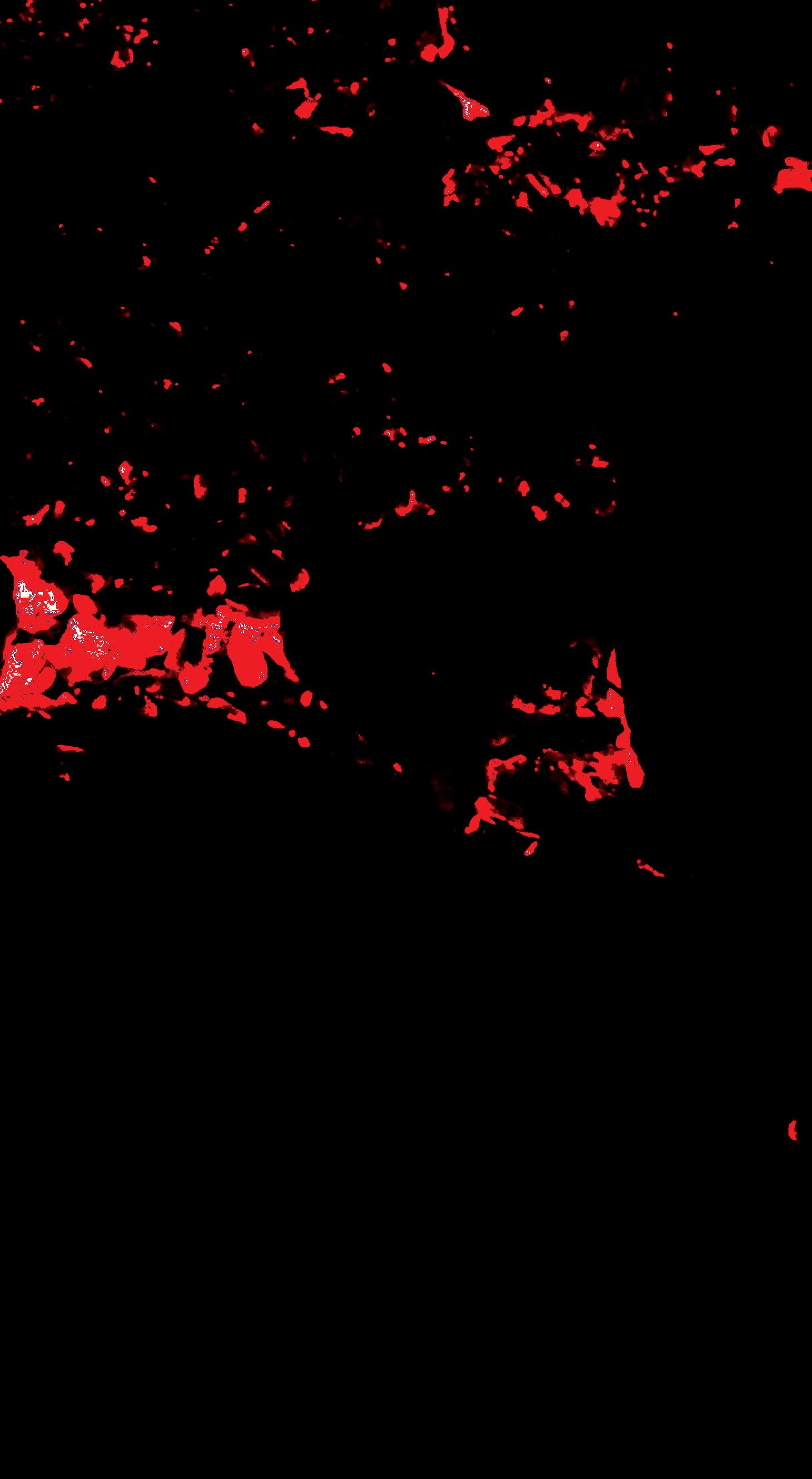
Arts & Entertainment 17
First Impressions Spoiler-Free Review: Pokémon Scarlet & Violet
As a lifelong Pokémon fan who credits Pokémon Emerald with helping me learn how to read, it came as no surprise to anyone that I booked the weekend of the 19th and 20th of November off work to play the latest instalments in the mainline Pokémon series, Pokémon Scarlet & Violet, my personal choice being Pokémon Violet. They’ve arrived to very mixed reviews, but here’s my take as a certified enthusiast.
First of all, important context – I’m not a proper hardcore gamer. I’d say I sit somewhere between ‘cosy gamer’ and ‘sweaty loser’ on the scale. It’s not my whole thing, but I do spend a lot of my free time gaming. I don’t play much competitively, only really for fun –mostly because the only game I play that goes competitive is Pokémon, and I just don’t have the smarts for it, because it’s seriously complex. Other series I love are Xenoblade, Persona, and Animal Crossing, so you get an idea of where I’m at. Now, on to the review!
On the whole, I really enjoyed the game. The change to an open world main line Pokemon game was definitely a welcome one, and the game feeling less linear was definitely fun. There’s always a huge emphasis on this being your journey, but I found this was the first game that it really felt like it. As much as there is very much a scripted story, you do get to choose your own path and your own order.
There are three ‘paths’ of the game you can follow – Victory Road, in which you follow the typical route of collecting eight gym badges and facing the Pokémon League; Path of Legends, in which you defeat giant Titan Pokémon to help your friend Arven collect a herbal remedy called Herba Mystica; and Starfall Street, in which you take down this game’s bad guys, Team Star. While you can technically do these in any order you want, the levels don’t scale to your level, which means you can face off against level 50 Pokémon while yours are level 20 – not ideal. This does take away a bit of the ’choose your own path’ element, since there does very much seem to be a suggested path… only the game doesn’t tell you what it is. I certainly found this a bit frustrating at first, and ended up heading online for guidance on what order to tackle things in.
Arts & Entertainment
18
Words: Dani McFawns
I really enjoyed the new Pokémon that were added into the new games. I won’t reveal all as they would spoil the story, but some of my new favourites were Clodsire, Bellibolt, and Fidough – and yes, Fidough is pronounced Fido, and it’s a dog made out of bread. It’s the second cutest thing I’ve ever seen after my favourite Pokémon, Spheal. Some of them I wasn’t a particular fan of, but that happens with every game, and that’s all personal preference – the one I hate based purely on bad vibes, Capsakid, has ended up having quite a popular evolution. Vibes are just off to me, though. Sorry Capsakid.
There’s a new mechanic added too, called Terastallizing. This can, in some cases, allow your Pokémon to switch types, which is pretty cool, although it usually leads your Pokémon to becoming a more powerful single-type version. This can be quite interesting, as for dual-type Pokémon, it can mitigate weaknesses that they have. For example, if your Pokémon is a dual Bug and Flying type, and it Terastallizes into a Flying type, that means it’s no longer weak to Fire type moves, which can be pretty handy.
There is a massive elephant in the room with the new games though, and that is the graphics. They are, frankly, not up to scratch. The frame rate is slow and the game is glitchy and laggy. Some of the bugs that have gone viral online include characters falling through the ground for no reason, characters floating in mid-air instead of riding on Pokémon, parts of the environment just entirely disappearing sometimes – if you search “Pokémon graphics” on social media, you’ll get a good idea. It’s a shame, because the game is great fun, but this definitely makes it a less immersive experience, and from companies like Game Freak, The Pokémon Company, and Nintendo – with the money that they have – you expect better.
Overall, do I recommend the games?
Absolutely. I had an absolute blast playing them and I’m enjoying the post-game. Just try not to let the graphics bother you too much and laugh it off when your character decides to fall off a cliff and float and the sky disappears. Oh, and catch a Bellibolt – it’s an absolute tank.
“I had an absolute blast playing them and I’m enjoying the post-game.”
Arts & Entertainment 19
Design: Arwin Quiachon
Review: A Plague Tale: Requiem
Asobo Studios presents A Plague Tale: Requiem, the sequel to the studio’s 2019 surprise smash hit A Plague Tale: Innocence. A direct sequel to the original, it picks up immediately where the first game left off; with the siblings Hugo and Amicia de Rune along with their companions fleeing the Inquisition in Medieval France, after the Grand Inquisitor tried to use the curse of the Prima Macula that afflicts Hugo to enact his evil plan. In Requiem, we see the same rat-based puzzle and soldier-focused combat and stealth sections from the original. However, after a few hours of play, the cracks do begin to show. Any obstacles that the player is presented with have one predetermined solution: whatever craftable item you need to make to solve the puzzle, the ingredients for it will be presented to you immediately before you need them, so at no point is the player really challenged by these segments. As for the soldiers, they don’t present much of a challenge either. While they are harder to take out than in Innocence, the stealth options mean that you most often don’t need to take out many of the soldiers to make your way through a level. I found myself more than once able to just run through the enemies to the stage’s exit. Ultimately, A Plague Tale: Requiem fails as a game, with much of the gameplay feeling like it’s there just because there has to be something for the player to do, and because of this reason I feel compelled to give the game a review score of 9/10.
Now you might be wondering why I have given such a high score to a game that I just said didn’t really work as a game. Well, the reason is quite simple. While the gameplay fails to be compelling to actually play, it is incredibly compelling narratively.

i.e., the game mechanics tell and build the narrative of the game so well that their actual faults as gameplay don’t really matter, at least not to me. While forging paths through rats doesn’t present an interesting challenge, it does make you aware of the stakes that are at play. While moving from patch to patch of tall grass to avoid enemies isn’t particularly difficult, everything about it conspires to make you feel tense and on edge and like at any moment you could die.
Requiem is not trying to create a challenging gameplay experience. Rather, it is trying to tell a story and the game’s mechanics are tools to tell that story. The word ‘cinematic’ is the subject of a lot of discussion in video games discourse. What does it mean, should games try to be cinematic, does cinematic storytelling detract from games or does it allow them to tell deeper narratives? These aren’t questions with right or wrong answers. But Requiem does
“The game has a great sense of ludonarrative harmony,”
Arts and Entertainment
20
Words: Arrowyn Williams
undoubtedly add something very interesting to this conversation. Requiem shows that engaging gameplay and cinematic storytelling are undoubtedly in conflict with one another but that doesn’t necessarily make the game worse. It may sound quite absurd to say that games don’t need to have good gameplay to be good games but playing Requiem has convinced me of this. Games don’t need sharp mechanics to tell a beautiful story, and for those looking for narrative fulfillment from games, that’s what really matters.
The story of Requiem expands on the relationship between Hugo and Amicia developed during the first game. The fantastic vocal performances from Charlotte McBurney and Logan Hannan beautifully depict that relationship. Whereas the first game focused on the bond between the siblings, Requiem focuses more on the chance of that bond breaking. As the Macula wreaks havoc on Hugo that breaking seems ever more likely, and perhaps inevitable. The story is about having
a loved one living with an illness and trying to do everything that you can for them, even when everything seems hopeless. Amicia fights for Hugo, sacrificing herself and those around her, reaching for a desperate chance to help him and through the performance, the environments and the gameplay you really feel the strength of her love for Hugo, even in a dark and desperate world. The story of Requiem is one I won’t forget soon. While I may not remember the puzzles I had to solve or the enemies I had to sneak past, I will remember the desperation I felt. I will also remember the love I saw between the two siblings and the absolute terror the game instills in the player. What really matters in a piece of art is how it makes you feel and what you take from it. Game mechanics alone can’t deliver the depths of feeling that a beautifully told story can.
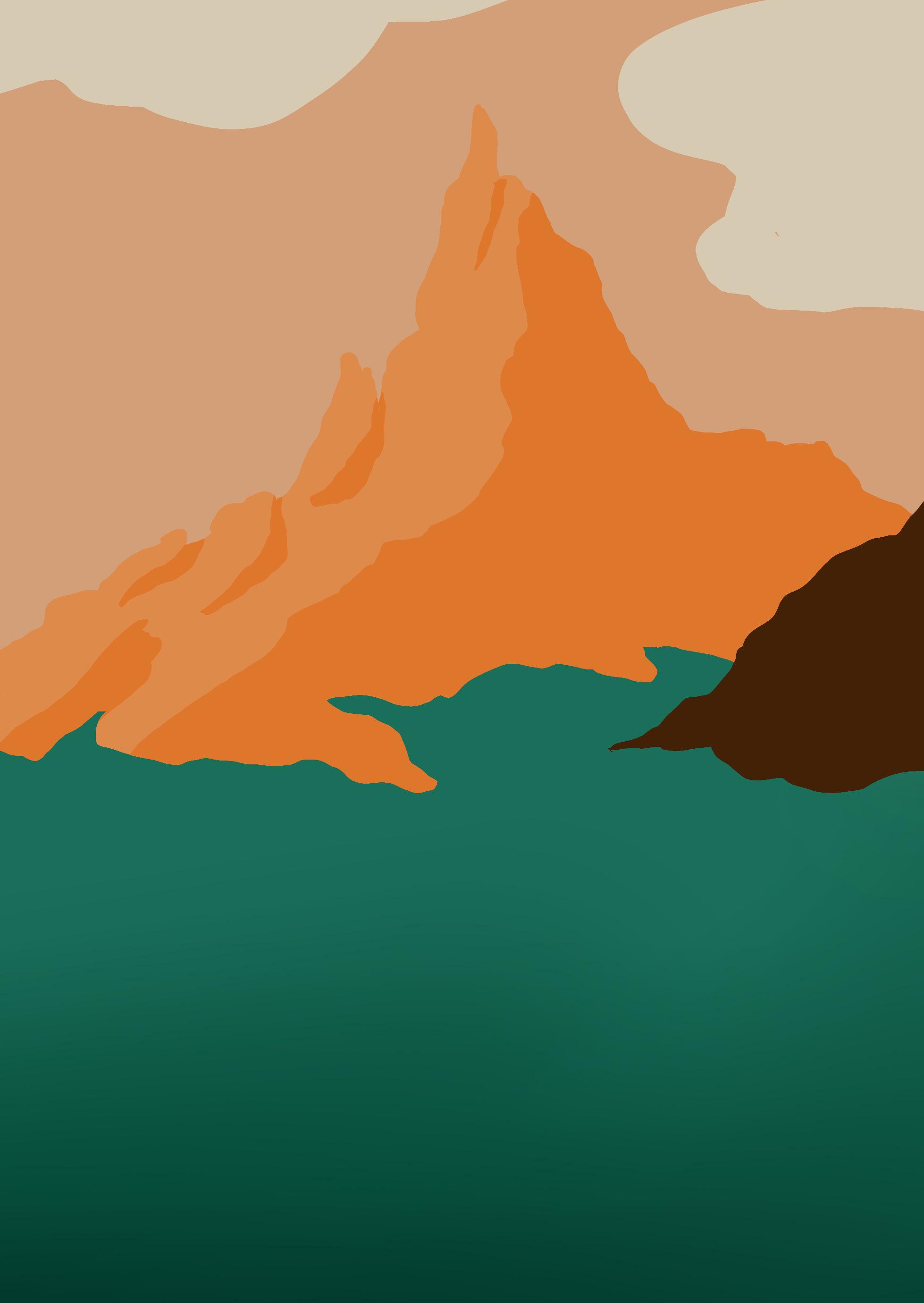
Arts and Entertainment 21
Design: Katy Blair
Take, Take, Take
A woman pulled a mewling creature from a particularly cantankerous spot on her chin. She looked upon the thing with horror. It stretched its small pink mouth and wriggled its worm of a tongue around the first word, ‘mama’.
The mother considered her spawn. From every angle it was ugly. Could it really be hers? It hadn’t any recognisable limbs, merely mounds of flesh that suggested a shape.
The thing grew bigger every day, but no more lovely. As its body elongated, the shapeless mounds grew turgid and pointed, like that of a starfish. It was not dexterous, but it could move its body across a room and perform simple tasks; opening jars and doors.
“Well,” the mother said, “let’s get you dressed.”
Draped in lace and frills, the creature was no prettier – but it did seem less alien when clothed in the woman’s own childhood dresses.
“You’re a daughter,” she told it.
The thing blinked with its beady red eyes. “I’m a daughter.”
At least it’s obedient, the mother thought as she gathered the squirming, repulsive body in her arms.
Creative Writing Words: Hannah Hamilton 22
When she saw this, the mother began to fret. What if it got out? It would never find love nor kindness from the world. People would gawk and gag and blame the poor creature’s mother for letting it out looking like that.
The mother fixed a deadbolt to the front door. “You are never to go outside,” she told the creature, “you are too ugly, the world will not be kind.”
The creature obeyed, though it stared out the window for hours. It did not fuss much, but it was ravenous. The mother was constantly making meals. One night when she was exhausted, too tired to cook, she let it gnaw upon her foot. The creature gorged and the mother saw it begin to change.
Such a healthy appetite, she thought.
Now the creature mews less, it looks less hideous too. As it eats her feet, hands and fingers, it grows its own.
One day it looks upon the mincemeat of the mother.
“You poor woman,” it says. “You cannot go outside like this, the world will not be kind.” It takes her clothes and places its feet in her shoes. A perfect fit.
“How do you look?”
“Like you.” The creature unlocks the door.
“But of course, you have your mother’s eyes,”
Creative Writing 23 Design: Fiona Howard
Words: Rebecca Raddatz, Design: Fiona Howard
Venus

they found you that day a jagged stone clinging to a cliff while water crashed against you with gnashed teeth bared splitting apart the land balancing, you watched the swallows swallowing salt water open mouthed until it came spilling out of your eyes.
they’ve tried saying your name.
it got lost in the flood. why were you there that day where the rabies-infected sea bites the shore?
water is a remnant of the day they found you on the beach hair a tangled mass of seaweed wrapped around a quivering shape the colour of pearls, the sky, bleached wood bones.
waves unfolded like petals on the sand the slow blooming of a smile.
the jewels on your skin were three kinds of salt
they took you home that day you became as hollow as the shell that spit you out. the glittering gold on your skin dried.
pillar of salt, chipped into smooth haired, slender shape stuck in a shell that is not yours translucent girl, girl of glass, crystal-girl, salt-skin, when the tide sweeps in below the swallows’ sweeping gaze you go back to being water.
Creative Writing
24
a butterfly has infiltrated my brain
it tickles each surface, each tiny flutter sends shivers through dormant muscles its restless body awakens a heart stained with memories of a previous possessor.

modifying thoughts that are now its own, i find myself planting flowers, craving its presence in the garden flourishing in my veins –the butterfly’s playground.
Words: Kate Heggie, Design: Kirsty Lawn
Creative Writing 25
Words: Andrew Young, Design & Photography: Ada Ung
Blue light
Blue light

From the cash machine
Reflects against The wet concrete.
In the distance Someone pulls down The shutters and Car tyres
Streak
Creative Writing
26
Words: C.E. Firth, Design: Jillian Mendoza
Trevor
Oh the Futility of life.
To lose you in the sunset;
I wait for you where the sky divides into the night
Where the stars shine
The Best ones go too soon.
And I see it in Nature;
To hear your voice carried away by the wind,

To see your eyes reflected back at me in the ocean
Your smile in the sun.
I know you are somewhere.
I carry you in my heart- Forever
Creative Writing 27
Doing The Dishes
– it’s hard. Numbness saturates the cold, empty space between the door and the sink bare feet flittering on chipped tiles blue veins suffocating in the grey wan of winter rain pulsing for a love that dissipated with the warm steam of burgers and the cosy whirring of the washing machine and the strong arms ringing round you and the sparks of food fizzling and frying (ignoring the burn marks, of course)
and it’s hard –being left with cold plates shoved carelessly aside and crusted over with wasted scraps, precariously balanced… your hands tread on eggshells. One wrong move and those china towers come crashing down and no one else to blame, nothing else to do but pick up the broken pieces
it’s hard playing God, empty eyes burning at chunks of chewed food slipping down the drain the last remains of their mouth, their kiss swivelling away, bubbles rising and glinting childishly, washing away the stains on the plates, your skin, but never the stains on your heart.
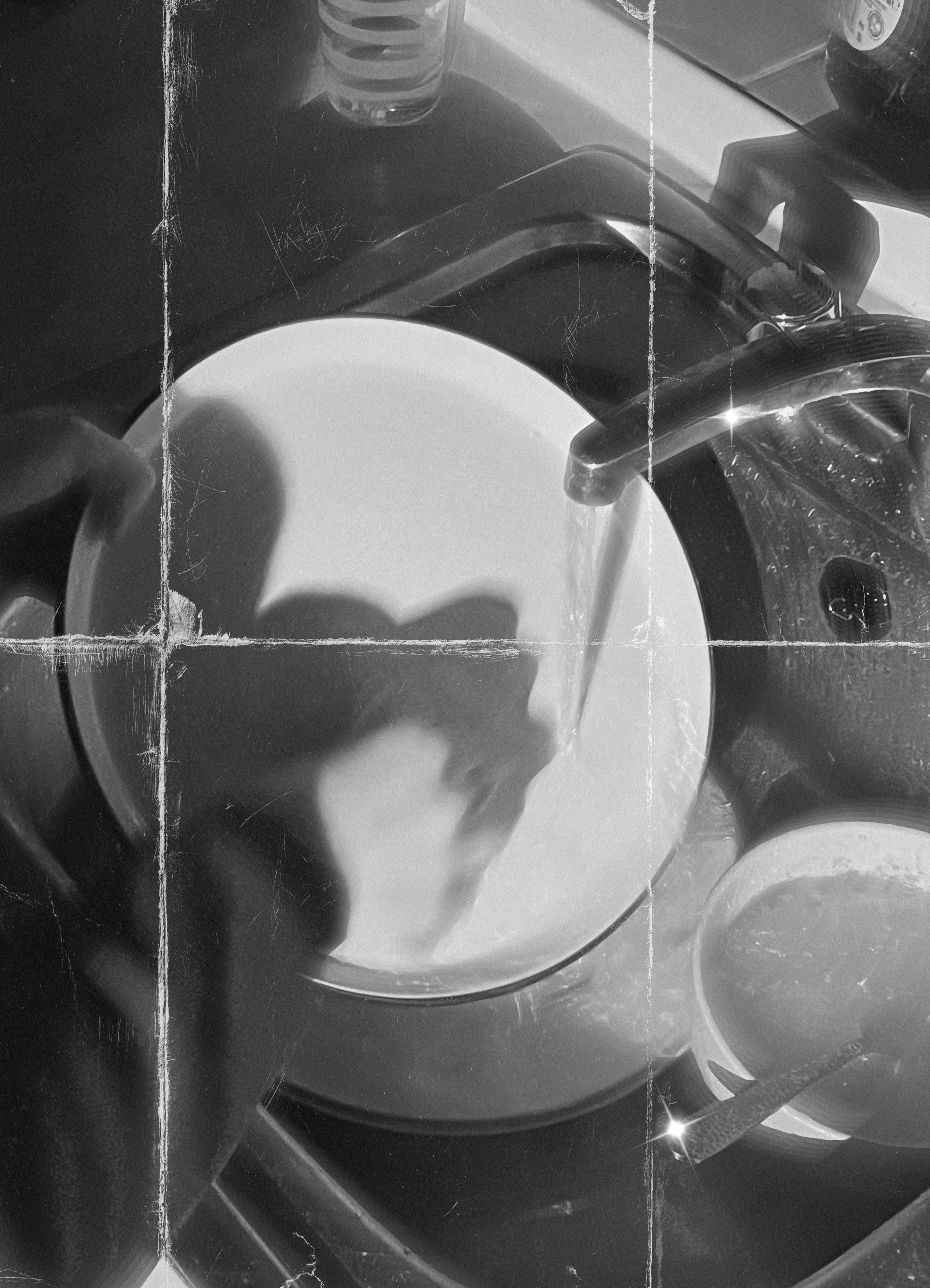
Creative Writing
28
Words: Orla Davey, Design & Photography: Maria Touloupa
3am Redecorating
Page 1 of 1 54 words 3:07 AM
You know how sometimes, despite knowing something is a bad idea, you still end up doing it? Because, as I zone out looking at the time at the bottom right of my screen for the 5th time in the past 20 minutes, I know I have no one else to blame but myself. It didn’t matter that I set myself deadlines, or reminders, or made to-do lists, or set alarms. None of it made a difference because it’s currently three in the morning and instead of blissfully dreaming in my soft, mushy bed with my blankets tightly wrapped around me, I am instead hunched over my desk with my laptop as a lamp, jealously looking at my cat who is living my dream. Why did I do this to myself? Because I’m stupid. I had two weeks to do this assignment, and I’m starting it now. When’s it due you ask? Why, at 12:00PM of course. A 4,000 word essay, and I’ve only written 54 words.
Page 1 of 1 64 words 3:18 AM
Page 1 of 1 0 words 3:24 AM
Page 1 of 1 57 word 3:41 AM
This is pointless. I had three weeks to write this and I just started and there is no way in hell this will be done by 12:00pm, and I’ll fail the module, and the year, and the course, and I will never do anything in my life. I can’t do this. I need to calm down. I need something. I need a change.

“A change, that’s it!”
Scratching my cat’s head as an apology for disturbing her beauty sleep, I stand up, put my hands on my hips, and survey the room before me. A dresser by the door, a desk next to it, a bookcase next to that, and my bed on the opposite side of the room tucked away in the corner. How did I ever think it possible to work under these conditions? No, this won’t do. it’s time for a change! After finding the appropriate life changing playlist on Spotify, I get to work.
It’s time to redecorate.

“Ugh!”
29 Creative Writing
Words: Fay Rizo, Illustration & Design: Morgan Palmer
Once, all pigeons lived together in a great tree.
Its branches spread far and rose to scratch the clouds. Every day the pigeons would wobble along, drumming their beaks against the wood to clear it of pests. As they worked, the rhythm became a melody. At dusk, when they struggled to see, the pigeons would huddle in the thickest parts of the tree.
Now, there was a falcon, who had tried to catch the pigeons but could never surprise and snag them as they huddled, protected. But this bird was smart. It knew that without the great tree, at dusk the pigeons would scatter, finding shelter, then they could be caught.
“How sad it is that the pigeons never get to see the world, they do not know how greatly it
would change them.” Loudly spoke the falcon. The littlest pigeon perked its head. “I do not think it would change me, how could it?”
“Ah, if you could only go out and see it, then you would understand.”
The littlest pigeon thought about the falcon’s words for many moons. It wondered what could be out there. At last, curiosity drove the littlest pigeon to leave the tree. It wandered far, until even the furthermost branches of the great tree could not be seen. Buildings rose, noises sparked, lights flashed. The littlest pigeon felt itself expanding with each experience. But there was no one to share them with. The night drew dark and there was no safe place to roost. The littlest pigeon tried return to the reat tree, but it was lost.
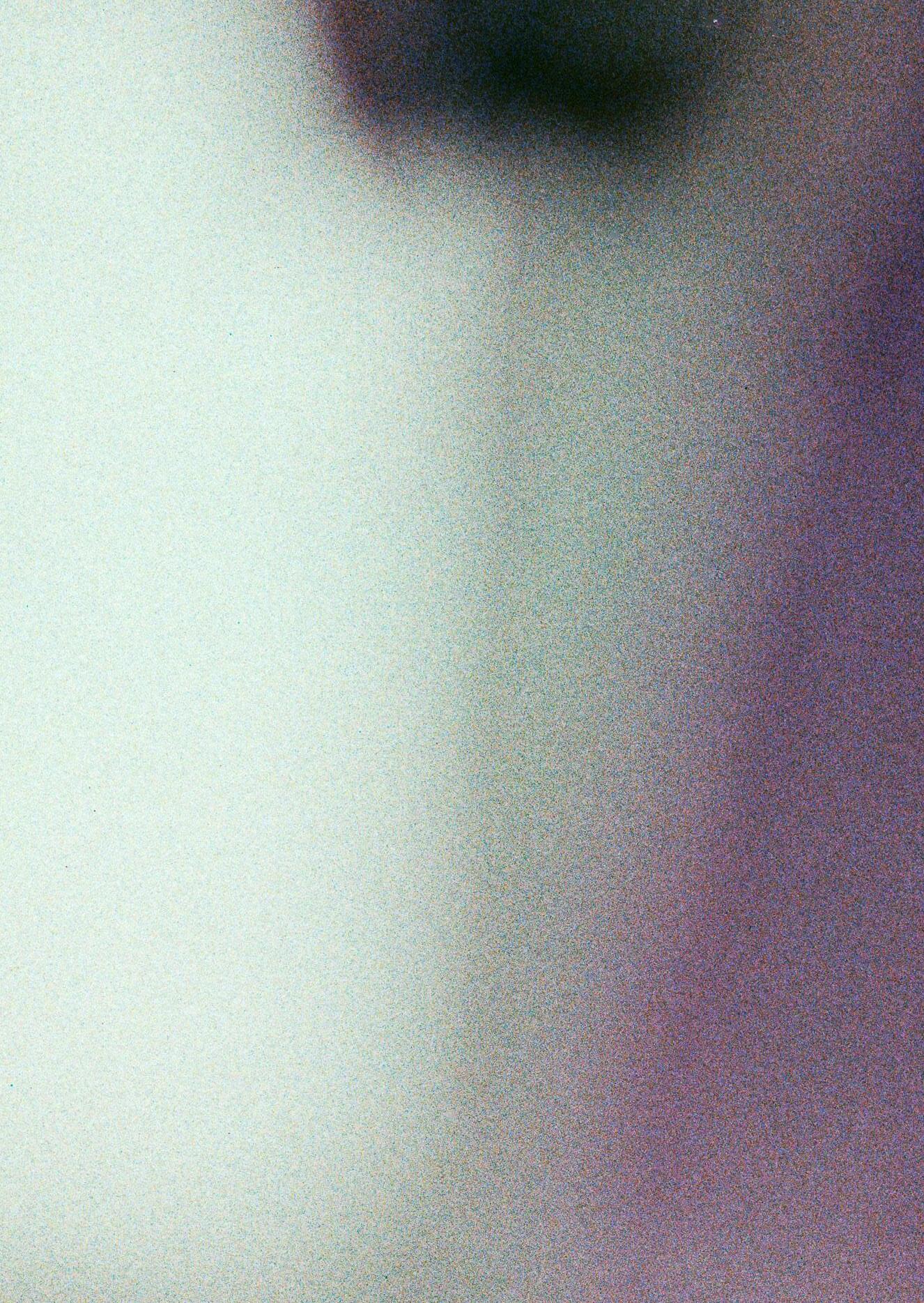
Then the falcon swooped down. Fast. “This is how the world will change you!”

It charged at the littlest pigeon, stretching its sharp talons.
The pigeon cried out, racing to shelter.
Talons flashed. Pain.
The falcon angrily held the littlest pigeon’s bloody leg.
The next day, the falcon went back to the great tree and tricked another pigeon. This one was not so lucky.
Now, the littlest pigeon learns about the world, travelling to every town and city, trying to
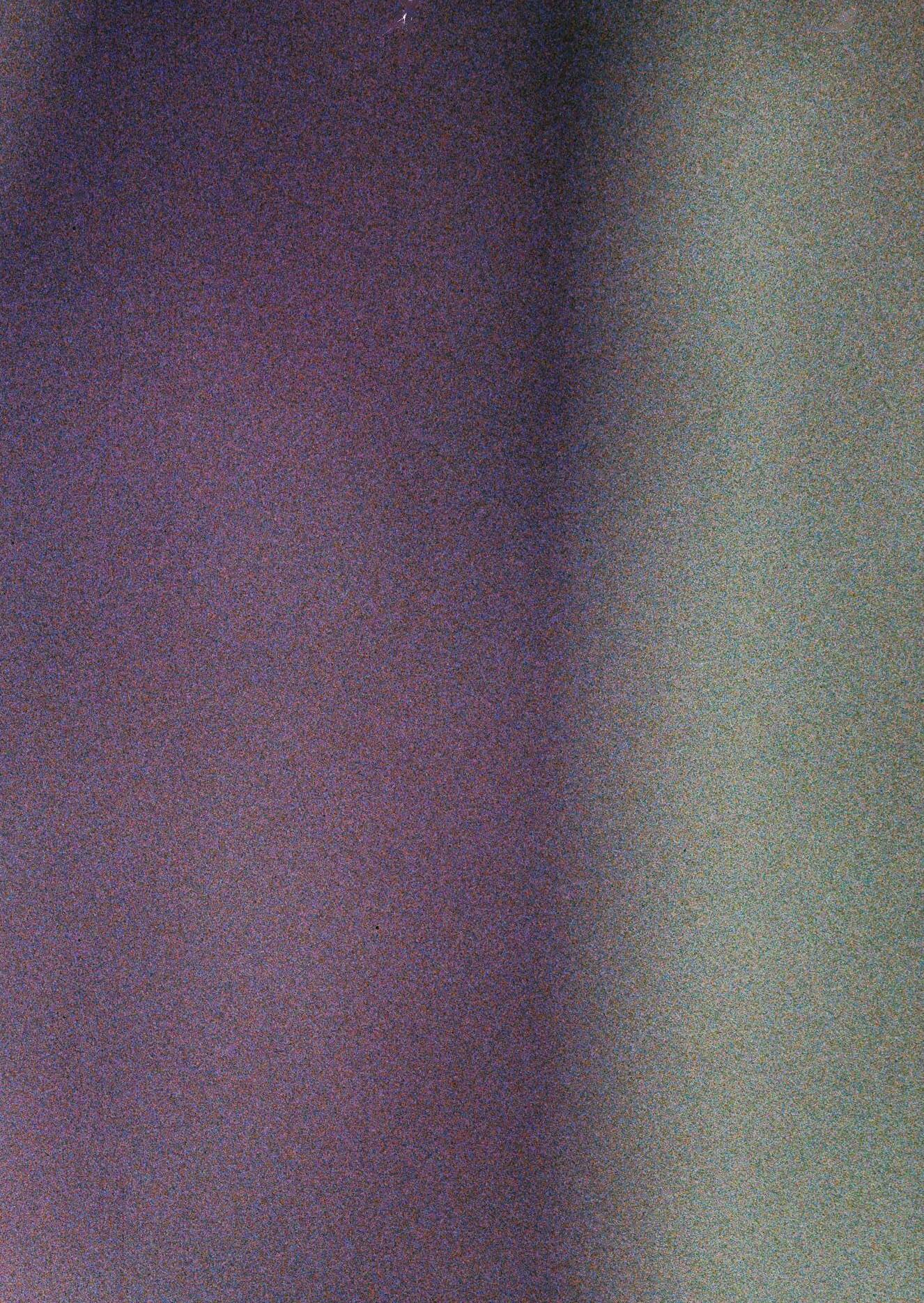
find its old home in the great tree. As it goes, it sings an echo of the working melody, the thrumming of beaks on wood. Many pigeons, the ones who followed the promise of reinvention, travel too. The falcon chases after them, eating well. Sometimes, you can spot their missing legs.
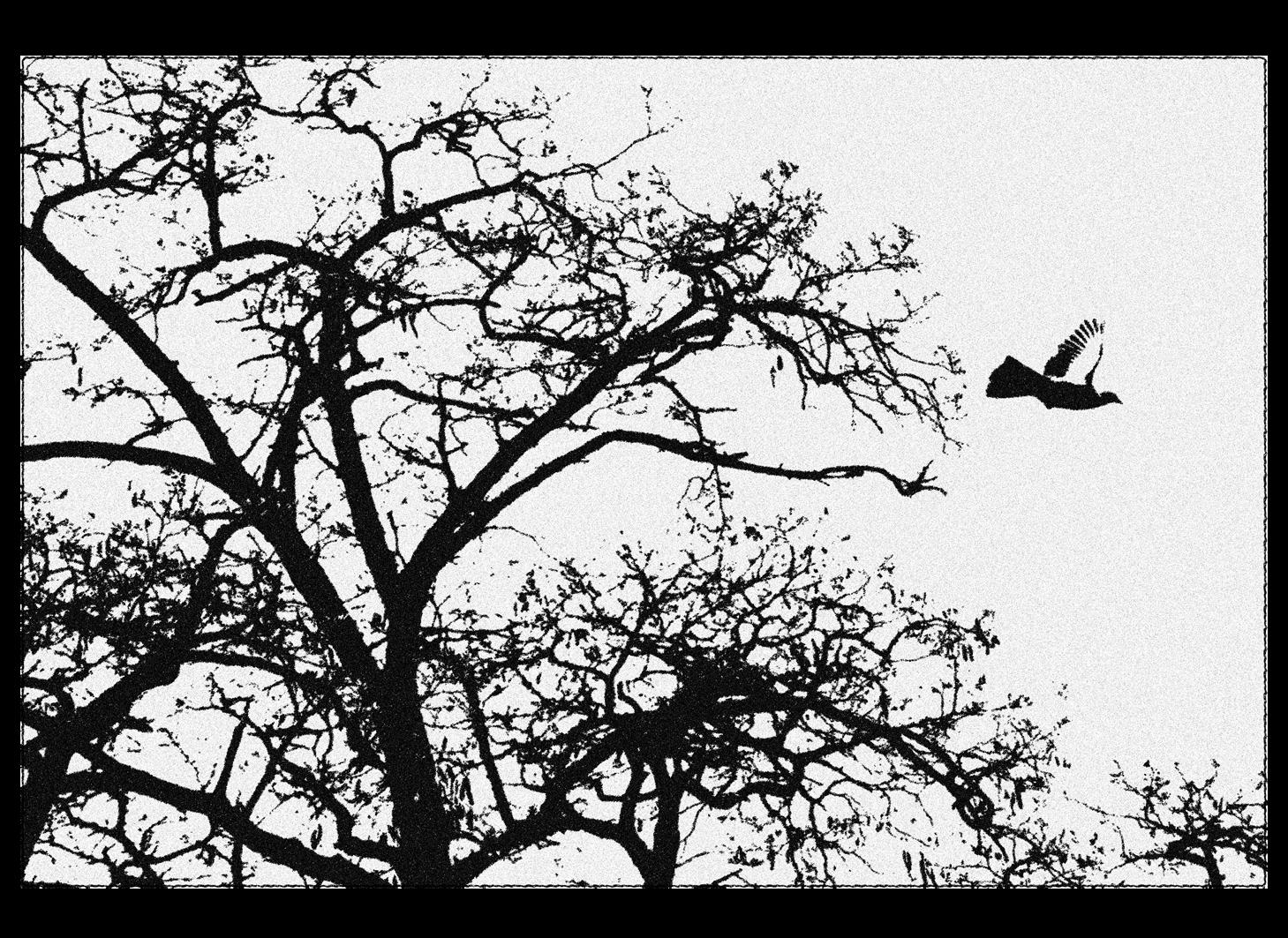
The Spoils of a Crisis
One of the principal challenges of dealing with climate change is transitioning to new lowcarbon sources of energy. The introduction of new energy supplies in the past has been slow, and over 80% of global energy consumption still comes from fossil fuels. While some steps have been taken in the right direction, such as strategic partnerships agreed between countries at COP27, the recent energy crisis has changed the landscape significantly, with the fossil fuel industry turning in record profits as a result. This turn of events has resulted in governments coming under pressure to introduce windfall taxes to redistribute this unexpected wealth, to ease the cost of living crisis.
The reasons for this are multifaceted, but one of the biggest factors is the Russian invasion of Ukraine. Russia possesses enormous fossil fuel supplies, boasting the world’s largest natural gas reserves and eighth largest oil reserves. It is also the first and second largest exporter of gas and oil respectively. In 2020, Russian exports fulfilled 45% of Europe’s import demand. Even the U.S. imported Russian natural gas before the onset of the war. Economic sanctions imposed on Russia by NATO and other allied countries, as well as the risk of supply disruption because of fighting between Russian and Ukrainian forces, have thus resulted in energy prices reaching record highs as well as historic market volatility.
This increase in profit has been significant. ExxonMobil reported a profit of $17.9 billion in the second quarter of 2022. Shell reported $5.5 billion. These figures represent a tripling and doubling of profits for each company respectively. According to data from the World Bank, the net income of the entire fossil fuel industry for the year is expected to be around $2 trillion, double the average of $1 trillion over the past 50 years. Despite this, fossil fuel companies have faced few attempts to curtail this sudden and morally questionable spike in their earnings, and as of the end of 2021, enjoyed a combined $470 billion in COVID recovery investment from across the G20 countries.
In a leaked Treasury report published by Bloomberg in August, it was revealed that energy companies based in the UK are projected to make excess profits of around £170 billion due to the crisis. This revelation resulted in anger from opposition politicians, lambasting the government’s stubborn refusal to limit the companies’ earnings in the name of economic growth. Indeed, the funding for Liz Truss and Kwasi Kwarteng’s proposed £100 billion emergency subsidy to help businesses and households through the winter was opaque to say the least, and the ensuing economic chaos caused by such unrealistic impulses contributed significantly to that government’s downfall.
Current Affairs 32 Words: Angus Coleman
The negative response to the Truss/Kwarteng approach seems to have inspired a different response in the new government formed by Rishi Sunak, with Jeremy Hunt as Chancellor of the Exchequer. Indeed, when Hunt was first appointed Chancellor in the last days of Truss’s premiership, he dismantled all of the Truss’s previous economic plans and did not rule out a windfall tax on energy companies, something that Truss had obstinately refused to do. Sure enough, in the Autumn Statement on the 17th of November, Hunt confirmed an energy profits levy of 35% that would last until 2028.
Responses from other European countries have varied. In September, French President Emmanuel Macron announced his support for a “European contribution mechanism” whereby energy companies would pay a proportion of their earnings to states to help with the crisis. He also called for increased collaboration between EU member states on the issue. Spain is currently debating whether or not to extend a levy of 1.2% beyond the next two years, while Finland is reducing VAT on electricity to help ease the cost on the public (though a windfall tax is also being debated).

This state of affairs is gloomy to say the least, with countless people facing a harsh winter as energy prices become increasingly difficult to afford. We have seen the effect on ordinary people evidenced by the opening up of “warm banks” – public heated spaces for people whose bills have become prohibitively expensive. The problem can be discussed endlessly from a policy perspective, but the difficulties facing people, especially the most vulnerable in our society, must be considered with empathy and understanding.
However, this crisis is changing the energy landscape in a way that has the potential to benefit societies in the long term, particularly in relation to environmental issues. The holes in the energy supply left by Russian fossil fuel sanctions will have to be filled, and this creates additional incentives for governments to invest in cheaper, cleaner energy. Furthermore, when governments go for short-term polluting solutions, such as Truss’ overturn of the fracking ban, there is fierce and widespread opposition. While the crisis is undoubtedly dire, we may see positive change in the future.
Current Affairs 33
Design: Tania Sutton
Words: Adila Muradova, Design: Lewis Elks

Have you ever asked yourself what exactly defines your existence? Is human life an abstract notion existing in our minds? Everything in the world can be categorized, we have created these categories. However, our perception of the surrounding world is something invisible, unstable, and susceptible to external influence. Like a chameleon changing its colour to communicate with the outer world. In this communication with the world, we’re constantly affected by a multitude of different interrelated factors: social identity, family, cultural background, the physical environment. We can continue this list endlessly, but instead, we will draw our attention to the most crucial element controlling human perception – time.
The question of temporality has been a subject of discussion for a long time, and the scope of its research is expanding in today’s world rushing with meteoric speed. So many people have spent almost two years in seclusion, completely isolated from social interaction, a rudimentary need for our mental health and identity perception. It is interesting that now, looking back at those days, our perception of two years differs from one spent in normal conditions. But it won’t take much effort to figure out the answer. And those who think that it might be related to the number of memories and data we record in our brains are on the right path.

This seclusion, in some way, was socially beneficial to the movement Black Lives Matter. Naomi Klein, Canadian author, social activist, and filmmaker, claims that in the midst of pandemic, we were witnessing another crisis concerning racism. She thinks that certain aspects of Covid-19 had uniquely affected our reaction to George Floyd’s death. “When you slow down, you can feel things; when
you’re in that constant rat race, it doesn’t leave much time for empathy,” she says. So, how many important things are affected by time perception? And how many might be dismissed because of the fast-paced environment? It terrifies when you think that you might be out of touch with your present.
Sudden events affecting one’s life can also cause a ‘liminality’ or a kind of ‘delusional’ state. I’ve come to these thoughts quite recently through my own experience. When certain events in my life took place - especially those of immense global and personal importance – when suddenly one morning I realised that staying in my country wasn’t safe anymore, so I had to flee and start building my life from scratch. I suppose many people fleeing their countries because of the war might experience the same things.
But, when abrupt changes require your body to have an immediate response, it does not mean that your mind can do the same. ‘Mental lag’ occurs when your attachment to the past dominates your present experience, thus resulting in a delusional state when perceived reality can seem unreal. The reason, as previously mentioned, might lie in the lack of social engagement or the number of memories with the present life. While constantly referring to the past, we may be in the process of creating them. So, the present is always something fleeting, and implicit, while the past is permanent and fixed. We may also ask ourselves what ‘time’ actually is. Is it an inner perception of the succession of events or should we define it in terms of its physical nature? And can we trust our memories if time perception is predominantly subjective?
Current Affairs
34
Florida Governor DeSantis’ Candidacy Is No Longer “Hot”
Observe any debate about cancelled celebrities and you’ll likely encounter the phrase ‘separate art from the artist’. I don’t know if that’s possible, but in 2014, future U.S. President Donald Trump tweeted: “Sissy Graydon Carter of failing Vanity Fair Magazine and owner of bad food restaurants has a problem - his V.F. Oscar party is no longer “hot”” and, frankly, the artistry speaks for itself.
Trump’s time in office was marred in scandal, but his parallel role as catty NYC man-about-town thrived. In a 2019 tweet, while president, he tweeted about an Instagram Live video by Massachusetts Senator Elizabeth Warren, saying: “best line in the Elizabeth Warren beer catastrophe is, to her husband, ‘Thank you for being here’...It’s their house, he’s supposed to be there!” It wasn’t confined to tweets, either. His nicknames for political figures are legendary (see: “Joe Hiden”’, “mini-Mike Bloomberg” and “Low Polling Liz Cheney”).
Recently, Trump set his keen eye for mockery on Florida Governor Ron DeSantis. DeSantis seem to hope to ride the hard-right wave created by Trump to the presidency. Florida’s ‘Don’t Say Gay’ bill - which bans talking about gender and sexuality in classrooms –has made headlines, and the state’s abortion ban has been challenged by reproductive rights activists in courts. DeSantis has received endorsements from both Twitter CEO Elon Musk and the host of the world’s most popular podcast, Joe Rogan. But there’s a fly in the ointment.
In the candidate selections for this year’s midterms, the Trump endorsement was the decider. He galvanises the Republican base and has announced his candidacy for the next election. Before even doing so he responded to Musk’s endorsement of DeSantis on his own platform Truth Social: “When Elon Musk came to the White House asking me for help on all of his many subsidized projects…I could have said, “drop to your
knees and beg,” and he would have done it…”
The 45th President has even picked the nickname - “Ron DeSanctimonious” - calling him: “an average Republican governor with great public relations.” The problem now for Don’t-Say-Gay DeSantis is that he’s a rival in Trump’s book and would risk alienating the mob by responding. Governor DeSantis may just be heading for a rude awakening, I’ll leave you with how Trump described the last guy who challenged him for the nomination: “Jeb Bush is a low energy person, for him, to get things done...it’s hard.”
Current Affairs 35
Words: Liam McClurg, Design: Fiona Howard
“drop to your knees and beg,” and he would have done it…”
Will Ethiopia Ever See True Security?
CONTENT WARNING: Humanitarian
On the 2nd of November the TPLF, an ethnic nationalist paramilitary group and the Ethiopian government. signed a peace deal in South Africa, to hopefully bring an end to the civil war which began in 2020. The TPLF were previously the ruling party in Ethiopia, but are now seen as a terrorist organisation by the government. There has been hesitancy in celebration due to the instability of peace between parties as the past has shown.
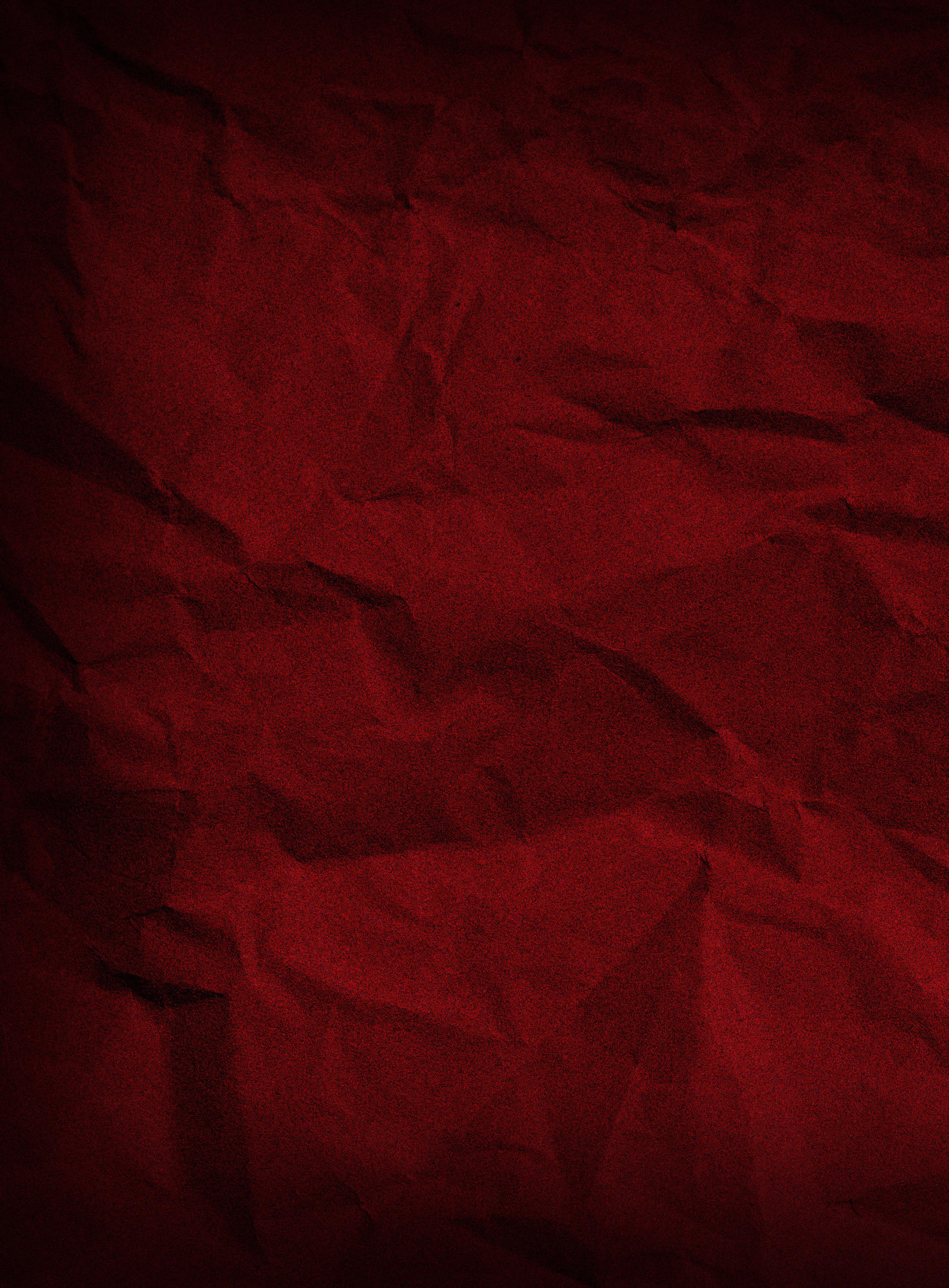
The geopolitics of Ethiopia have always been complex, with its desirable proximity to the red sea, wealth of natural resources and federal state structure. Historically the Horn of Africa has seen successive bouts of conflict, namely the Eritrean-Ethiopian War and the insurgency in Ogaden. Ethiopia has transitioned out of its previous autocracy, headed by Tigrayan Zenawi, whose rule was marked by the brutal conflict with Eritrea.
This change brought about the release of political prisoners, emergence of civil society and political parties, and most crucially, a free voting system. However, tensions between the TPLF and Ethiopian government ignited after Ahmed rose to power.
Despite resistance from the TPLF, Ahmed was seen as a breath of fresh air for the nation, he pushed for democratic change within communities and across the country, and began the process of amending outdated and oppressive laws. This included anti-terror legislation, reforms saw the release of 304 prisoners. He also invited exiled media outlets to return and aimed to topple state monopolies to tackle the economic despair. For his work establishing a peace deal with Eritrea and ending the long simmering border conflict he received a Noble Peace Prize in 2019, signifying recognition from the international community.
However, Ahmed’s actions and recognition have recently come under scrutiny. Eretria’s treatment of the Tigray region has been heavily criticised, as well as comments Ahmed made about sexual violence in war during his speech to Eritrean ambassadors in 2019, with many calling for his peace prize to be revoked.
“Since the 2019 election of Prime Minister Abiy Ahmed, Ethiopia has become a democracy.”
!
Current Affairs Words:
Duff 36
Crisis
Annabel
Following his election, the spark of discontent became a flame in November 2020 when conflict between the Ethiopian government and TPLF erupted after Ahmed’s attempt to topple the TPLF in the Tigray region. An immense period of conflict escalation ensued with back-and-forth offensive operations. Throughout the two-year war the rebels sought to capture cities such as Mekelle, and the Ethiopian government launched ground offensives against them. In spring 2021 the TPLF became outraged when it was admitted that the countries former enemy Eritrea, had sent troops to fight on the side of the Ethiopian government.
In September 2021 the UN stated that the Tigray region was under a ‘de facto blockade’, and in state of famine and insecurity. Tensions cooled slightly when a call for cessation of hostilities was announced in March of this year. The Humanitarian Truce was formed between the TPLF and Ethiopian Government, however disagreements over crimes, and procedural functioning around any peace-making stalled progress. There were accusations and an unstable mutual effort to maintain peace. The conflict resumed when the TPLF launched attacks against the federal forces in August 2022.
Displacement, death, and rife war crimes have plagued the Tigray region and Ethiopia as a whole as a result of the two-year civil war, and the aftermath doesn’t look much better. The nation faces an extreme drought in which more than 10 million Ethiopians are expected to die. Nada Al-Nashif, The UN Deputy High Commissioner for Human Rights, cited the acute food insecurity in the north of the country and famine in the Tigray region in a speech in September 2021.
Design: Katy Blair
Internationally, the civil war has acted as a damper to Ethiopia’s role as a diplomatically influential country within the African Horn.
The 2022 deal is also seen to be at risk of violation by Eritrea, and in this case the neighbouring country cannot counter Ethiopian authority though the deal. Despite doubts, it appears the peace deal is a step in the right direction. However, as the nation begins to dig itself out of the dire aftermath of the war, dangers of internal tensions reigniting are not foreign to either party, while the threat of external tensions with Eritrea still loom.
Current Affairs 37
“The U.S., who provide aid and support to the region especially during its transition to a democracy, has at times had to question reports of Ahmed’s treatment of his people.”
DUSAsk
We're Candy, Lauren & Sylwia from DUSA's Advice Team and Amarachi, your VP of Student Wellbeing! We're here to support you with university life (academic issues, housing, wellbeing, complaints, signposting, advocacy and much more. If you'd like to pop in and chat, you can find us at DUSA level 4 in the HIVE or email advice@dusa.co.uk or vpsw@ dusa.co.uk. This month we're giving all of our best DUSA-related advice. Look out for our monthly advice page!
How can I engage with DUSA?
There are several activities organised in DUSA to engage with students all year round. Ranging from commercials (Premier Shop, The Liar, Pavement Café) and our night clubs to every other free student support services provided at DUSA. We have a team of advice and support officers that students can access. The student executives organise events too, some of these include the Wellbeing Wednesday session and dog therapy, & Groove with GOGA with free refreshments organised by the VPSW (vpsw@dusa.co.uk) to help students de-stress, relax and socialise, community action forum led by the VPC to promote student led campaigns, academic skills week led by the VPA to remind and re-educate students on academic skills, fund raising activities by the VPF, representation opportunities shared by the VPR and our over 250 students societies led by students under the watch of the VPSA.
Can I know more about DUSA student representation?
DUSA is run by a team of elected student executives and permanent staff. The executives are made up of sabbatical and non-sabbatical student elects: President and the Vice Presidents of Academia, Representation, Student Wellbeing, Student Activities, Community and Fundraising. They form part of the board members who are responsible for the decisions made in how the organisation is ran for the benefit of the entire student body.
How
DUSA elections take place during the second semester, in March. If you are interested in any of the student executive role and want to make a positive change to the general student experience. Keep an eye on the DUSA website, the social media platforms including the exec Instagram and your email inbox for the announcement of DUSA nominations and elections. You can nominate yourself for only one role and then prepare for your campaign and election.
DUSAsk Words: DUSA Advice Team 38
can I become a member of DUSA student representation?
I will be in final year/first year by next semester, is it a good time to stand for election?
At any time you feel a need to make change is the best time to start working on the change. With being a DUSA executive, you are not left alone to do all you intend to by yourself. The permanent staff members are a group of people who really want to see you succeed in your manifestos and willing to offer you support. You also have an option to stand for either the sabbatical or non-sabbatical role and each of them is designed to fit the schedule of the elected members. The sabbatical roles include President, VPA, VPSW and VPR where you take a break from study to this. And you can easily get back to your study after your service year(s). The VPF, VPC and VPSA make up the non-sabbatical volunteer roles which you can do alongside your studies and schedule is very flexible.
I have taken temporary withdrawal and I find it hard to come back. Is there any way you could help me?
Returning to school may be a challenge. There is a variety of factors that can make it even harder. We always recommend a confidential chat either in person or via Teams so we can understand the circumstances well and support you as much as we can. If you reach out to us advice@dusa.co.uk we will meet with you and discuss your options. No issue is too small for us so don't hesitate to contact us.
I am a mature student, and I would like to engage in some wzactivities at DUSA.
DUSA has recently introduced Afternoon Tea for mature and parent students. The sessions are free and you are welcome to join. We are hoping to create comfortable space for mature and parent students to engage in discussions and address the issues they are concerned with. Please follow our Instagram: dusatheunion
I have received support from DUSA Advice before, can I do it again? Is there a limit of queries per student?
We can support you whenever you need it and we do not have any limit of queries, contact us on advice@dusa.co.uk with every new issue. This will enable us to help you efficiently and fast.
I started in September, and I still don’t know much about any student services, what should I do?
If you are interested in Student Services and you would like to know more about them we are happy to meet you and talk about them with you. We can meet you in person or online (whichever you prefer). If you are looking for particular service, we can help you find the right one for you and support you getting in touch with them. Email us advice@dusa.co.uk to arrange a meeting with one of our advisors.
DUSAsk 39 Design: Katy Blair
Dundee University Participation Society



We are the Participation Society, also known as DUPS, and we are a sports and social group that aims to be fully inclusive and accessible for everyone. We give the opportunity for students to try different sports and activities every week as well as a number of socials of all types to meet new people.

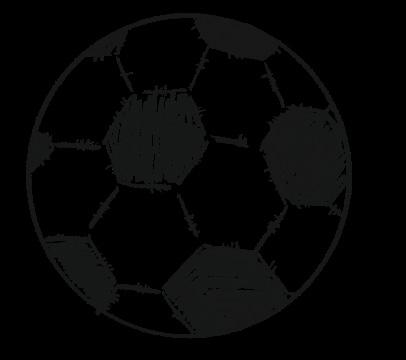
Every Wednesday we play a different sport or activity in a non-competitive and friendly manner to give everyone the opportunity to try new things, get active and have fun without the pressure or expense of just joining one sports society. We’ve offered lots of activities before such as football, hockey, Zumba, dodgeball and rounders as well as many more.
We also hold several socials throughout the year with drinking socials such as pub golf, themed dress-up nights, and pub quizzes, as well as chill hangouts after sessions. We also hold non-drinking socials, such as give-it-a-go
Society Spotlight Words: Participation Society, Illustration & Design: Gracie Whitehouse
Words: Claiming Our Futures, Design: Katy Blair

Claiming Our Futures
A community, run by students which provides opportunities to further and explore future employment opportunities. The prospect of employability and the future after university doesn’t need to be scary or daunting. This society creates a welcoming, exciting platform that creates driven people, ready to take the next step in their future. By partnering with the Universities’ careers services, as well as local and national industries, students will gain a deeper understanding of the employment landscape and how to use their skills to gain the wider experience they need.
“This society allows students to become more informed about these opportunities while developing their skills through existing opportunities”
This society provides students within the Humanities and beyond, the opportunity to apply the knowledge taught at university and focus on the opportunities that await graduation.

Society Spotlight 41
Phoebe’s Gyoza for Lunar New Year

I LOVE gyoza. I love any kind of dumpling to be perfectly honest. There’s just something about them that’s so comforting and moreish that makes you want to stuff your face with them. And that’s why they’re a great dish to serve up for Lunar New Year! My mum and I always make them to celebrate, alongside an array of other yummy dishes. They’re fairly easy to make and this recipe will make a lot, making it great to share with your family and friends! Everything you might need can be found at Matthew’s in the city centre –support your local Asian supermarket!
Disclaimer: I usually don’t measure out the ingredients (I just know that the amounts are right in my heart) so this is a bit of an estimate. I made this recently and it tasted good but feel free to make your own judgements and changes!
Ingredients:
1 x pack of gyoza wrappers. These are round in shape and usually found in the freezer section –make sure you defrost them before making!
The filling:
1 x pack of pork mince OR
Half a white cabbage, a couple of carrots and some mushrooms (all finely diced) if you want it vegan!
A thumb-sized piece of ginger, minced
As much garlic as your heart desires, minced
2 spring onions, white and greens
finely chopped
Lifestyle Words: Phoebe Wilman 42
Method:
Put all the ingredients for the filling into a large bowl and mix everything together. Of course if you are going for the vegan option, you will be able to taste to see if the seasoning needs adjusting.
Set aside a small dish of water – I use a sauce dipping plate for this. Take a gyoza wrapper and place it in the middle of your non-dominant hand. Place a teaspoon of filling into the centre of the wrapper. Be careful not to overfill as your gyoza might split open when cooking!
Dip your fingers into the dish of water and wet the outer edges of the wrapper. This will help the wrapper to stick together when you close it up! I go with the two-direction half moon shape fold – this isn’t as complicated as it sounds! With the wrapper and filling in your hand, fold it in half so that it becomes a half moon shape, but only pinch the edge in the top middle so that it only seals there. Then, take the edge facing towards you, fold it towards the middle and pinch against the back edge to make a pleat. There should be room to make a few pleats on either side of the middle! It can be tricky to get a hang of at first, but just make sure it is well sealed so that it won’t split during cooking!
Repeat until either your filling or wrappers have run out. I tend to try to make the whole pack of wrappers, because quite frankly you might as well! You can freeze any leftover gyoza you haven’t cooked!
Heat a frying pan with some oil in it – preferably a pan that has a matching lid. When the pan is hot, arrange your gyoza in the pan. If you are making a lot all at once, you can arrange them in a circular formation. Fry the gyoza until the bottoms are crisp and golden. Then, pour in enough hot water to just cover the base of the pan and immediately cover with a lid. This will steam the gyoza. Steam until the water has pretty much evaporated, this will take around 3-5 minutes.
While the gyoza is steaming, you can mix up your dipping sauce. I tend to go about 2:1:1 ratio of soy sauce to vinegar to chilli oil.
When your gyoza is cooked, take off the lid and serve up! If you wanna be really fancy, you can flip the gyoza from the pan straight onto a plate – if you arranged a bunch into a circle they’ll end up stuck together at the bottoms to make an amazing crisp, golden circle of deliciousness.
Enjoy! And I hope everyone has a great Lunar New Year!
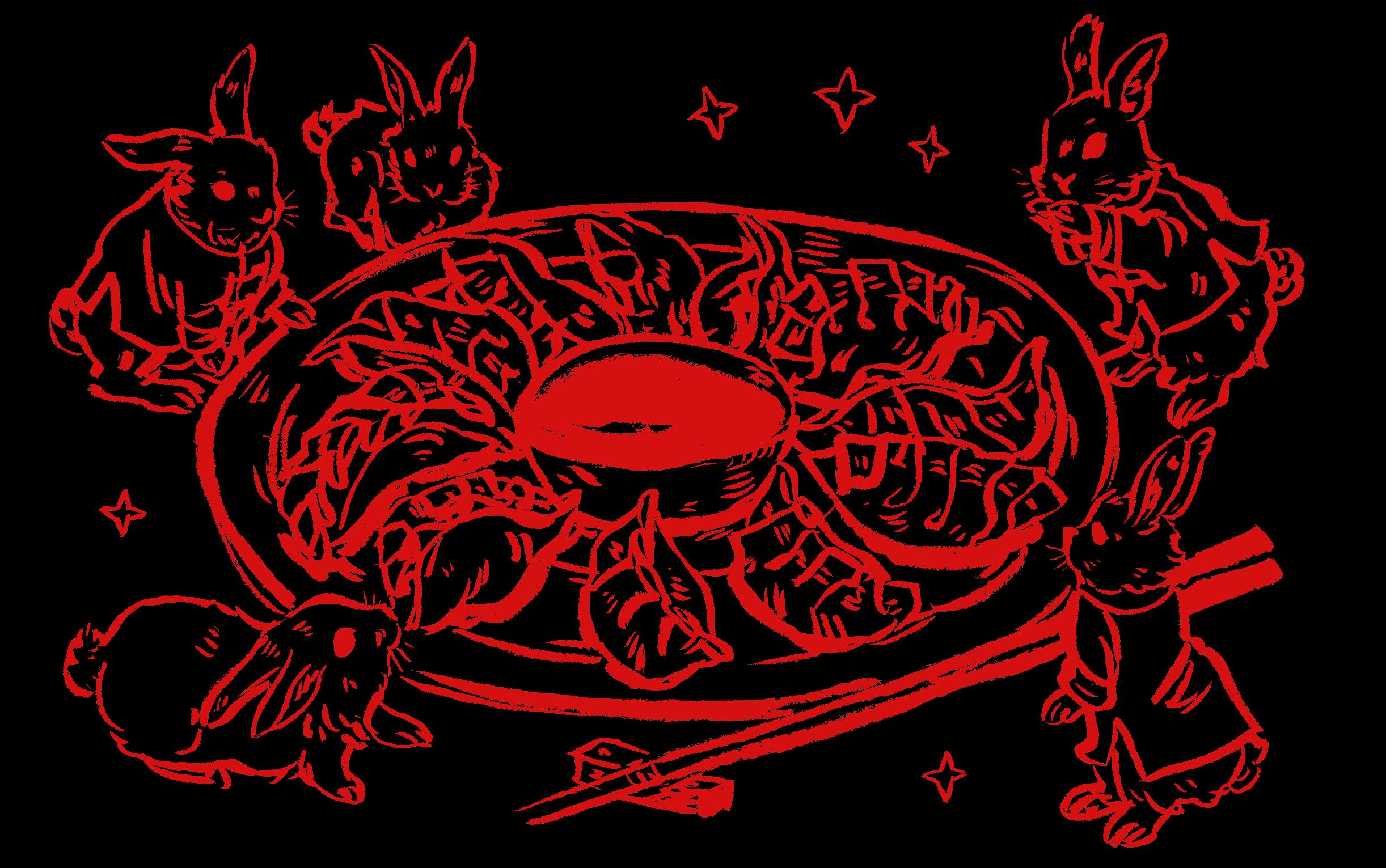
Lifestyle 43 Illustration & Design: D. Pryke Thomas
Little Model Highlands
In the summer of 2021, I walked from Drymen (near the start of the West Highland Way) to the Cape Wrath lighthouse (the north west tip of Scotland). The total distance was around 500km, it took us around 27 days. Joining me was my long-time friend and a rotating cast of other friends who dropped in and out.
I, like many Scots, especially the outdoorsy types, have pockets of memories scattered across the Highlands. Any drive through its valleys and around its Lochs are sure to turn you around, so that wherever you stop, that location will seem to exist slightly outside of reality; at least, that is how I remember the Highlands. I have seen videos of myself as a toddler at old train tracks. I can remember a tiny town where my family stopped for unch. I remember the school hiking trip where I first tried, and failed, to flirt with a girl. I remember where I started my Duke of Edinburgh expeditions. In these trips, I’ve always remembered the Highlands like an impassable wasteland that stretches hundreds of miles in every direction.
Dundee, eventually you will arrive in Aberdeen; I suspect many of you will be able to picture the road which connects the two. We all know a

I also believe that everyone has a general concept of their expanded surroundings. We all know that if you follow the coast east from Dundee, eventually you will arrive in Aberdeen; I suspect many of you will be able to picture the road which connects the two. We all know a friend’s house outside of town. I believe taking the time and walking the route to your friend’s gives a greater feel and awareness of distance and direction, over the drive to Aberdeen.
So when I stepped off the bus in Drymen, I was expecting many things. Failure, mostly, alongside a rapid decline in health and hygiene, and yes, the possible glory if I were to finish the trail.
The walk, delayed by Covid, had been planned for two years. Every kilometre had been considered and weighed. I believed I had considered every possible outcome, but I did not expect Scotland to shrink in around me. Walking through the highlands, bottom to top, gives you a greater appreciation for the distance which surrounds you. Our trail cut over the valleys that a car journey might typically go around, but coupled with access to a compass and the long walks the Highlands stopped turning me around like a car journey

44 Words: Samuel Blood Lifestyle
dwindles away from the highlands, into Scotland’s shallow, barren corner where the Cape Wrath lighthouse is.

This is not to say that the expedition was underwhelming. I am blessed with good memory and an excellent mind’s eye. I can still see every metre of the mountain passes, bogs, breaks and campsites. Given ten minutes to my own thoughts, I’ll let the tape play at 1000x speed and look back fondly at the one of the best months of my life. My partner and all our friends who dropped in and out were fantastic.
These points, combined, paint an unfortunate picture. My two-year-old brain was fascinated with the infinite outdoors which surrounded the old trains. The illusion is ruined when I know that the hill where I got rejected for the first time is just around the corner from those train tracks, a five hours walk.
And so there I was, at the northwest tip of our great nation, basking in the sunset, glory, and a healthy dose of whisky. On the most beautiful beach I have ever been on, listening to the waves by Kearvaig bothy, I slowly realised that my beloved Scotland isn’t the great outdoors I once thought it was. I would liken the experience to watching a grandparent become frail, or returning to the halls of your old primary school.
What few corners of the Highlands I haven’t walked yet, I plan to stay away from. Filling in the last blank spots would shrink Scotland even more, and surely crush me.

45
Lifestyle
Illustration & Design: Morgan Palmer
Changing with the Seasons
The nights are getting longer, and the bitter sting of frosty mornings grows nearer every day. With winter on our doorstep, it’s clear that nature is preparing for its arrival all around us. The animals are hibernating. The leaves have fallen, and the plants have been laid to rest, ready to wake in the spring. One look at the preparations of nature, and you’d expect to see something similar happening in our lives, yet the stagnancy of our modernity seems to have drowned out the changing of the seasons.
A hundred years ago, it would be common knowledge that our lives would be affected by the seasons. Children’s sports games would change with the colder temperatures, and housewives would be preparing home-made jams and warming soups. Evenings would be spent by the fireplace, reading, crafting, or just spending time with the people we loved. I don’t mean to romanticize the past – a time we all know was burdened by war, grief, and oppression- yet these small seasonal pleasures seem to have been transformed into the plastic ornaments and consumerist slogans we see today.
Unfortunately, most of us simply don’t have the choice of slowing down and getting into nature. We all know that winter brings exam season resulting in long nights in the library filled with glaring lights and caffeine. However, even small attempts to align ourselves with the seasons can help us become healthier, calmer, and less overwhelmed.



Take seasonal eating, for example. We are lucky enough, that whatever we want, regardless of the season, we can probably find it in the supermarket. This is a great luxury, but it doesn’t come without its flaws. Much of the produce we see can’t naturally be grown in the UK, especially not all year round.
To counteract this, we must ship it hundreds of miles – using legions of fossil fuels – to get produce on our shelves. Then, with nothing forcing diversity, we eat the same types of fruit and veg all yea. If we chose to eat seasonally, not only are we more likely to find local foods (and reduce our negative impact on the planet) which will be better quality and often cheaper. We will also be encouraged to
Lifestyle Words: Georgia McLellan 46
try new items, and looking at the gut health craze, we see that plant variety is the key to good health.
Humans are supposed to work in sync with nature to function at our best. It’s no surprise that an early morning start is harder in the dark December months than in the bright sunlight of a summer’s day. We end up criticising ourselves when we can’t stick to that rigorous workout routine or keep hitting that snooze button during the height of winter. We need a bit more compassion with ourselves, and some adapting to our natural tendencies. Try get that extra hour of sleep in if you can or attempt some calming zen yoga instead of your usual cardio session. This way, we can maintain a healthy, calming mindset that fits hand in hand with our natural inclinations.
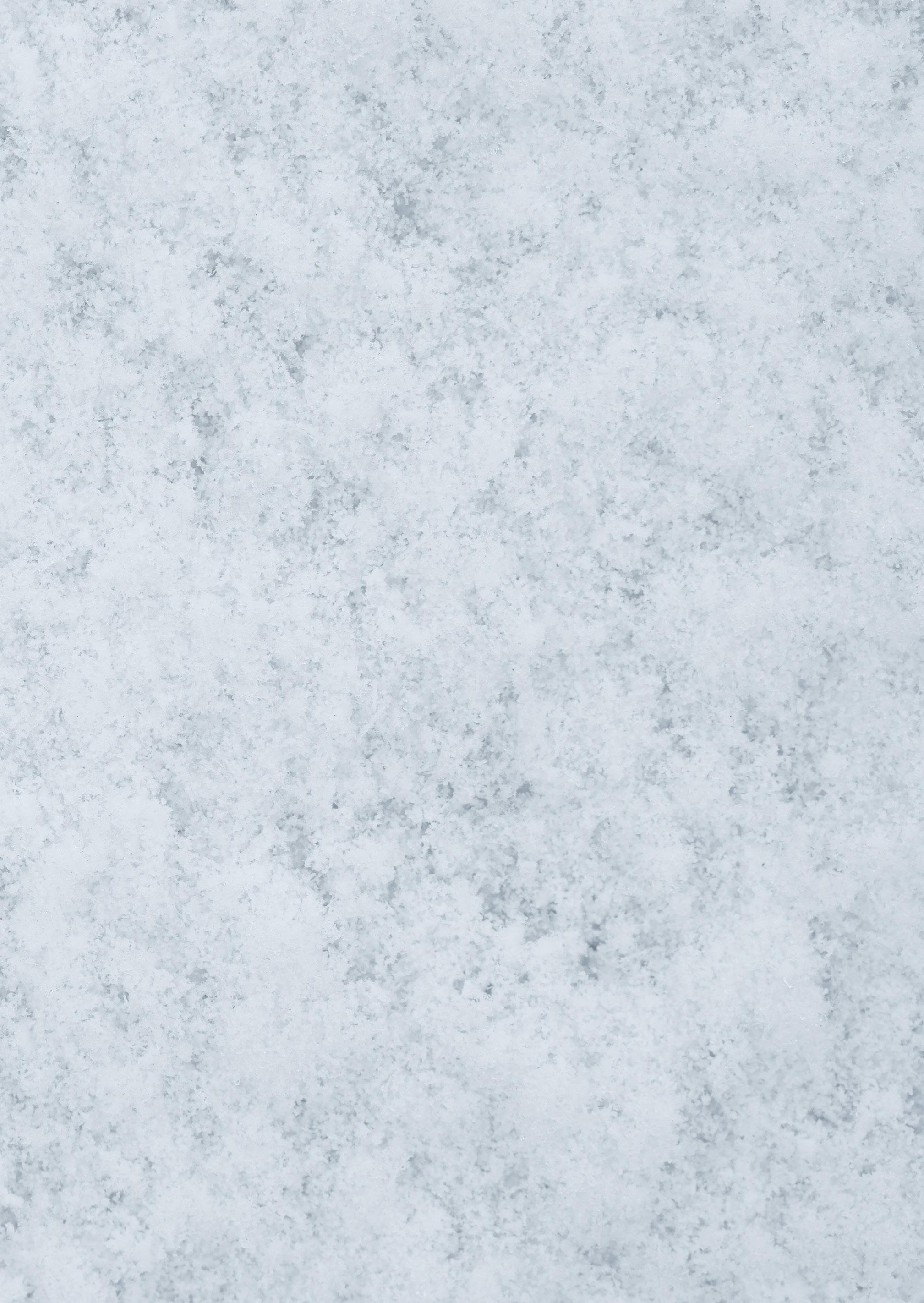

So, go on that woodland walk, snuggle up for some movie nights, and make yourself a cosy cup of tea with good company. These small luxuries no longer have to be frivolous, but vital for keeping us mentally and physically strong.

Lifestyle 47 Design: Kirsty Lawn
Community Action Forum: Campaign Progress Community Action Forum: Campaign Progress
In Issue 97, I wrote about the Community Action Forum and the fantastic things the forum offers. If you didn’t know, the Forum consists of students and charity professionals interested in campaigning and creating social change. The Forum meets every other Tuesday to provide all the support you need to create a student-led campaign. Some of the charities which are partners on the Forum include Dundee Pride, Shelter Scotland and ScrapAntics. Here is a short update on the Community Action Forum’s progress because the Forum is there to benefit everyone, regardless of who is campaigning.
On/Off Campus Words: Emma Sturrock 48
Dundee Student Renter’s Union
The Dundee Student Renter’s Union focuses on improving the rights of renters living in student accommodations. The Union also raises awareness of the conditions student renters face. For example, the Dundee Student Renter’s Union submitted a consultation on the Scottish Government’s ‘Housing to 2040’ Plan. The information for this was collated by local people with active collaborations from the Union’s members. For more information, you can check out their Twitter page:
https://www.facebook.com/dsrudundee/
https://twitter.com/dsrudundee
https://www.instagram.com/ dusatheunion/?hl=en
The Socialist Society
The Socialist Society has brought a campaign called Help Not Harm to the campus and the Forum. This campaign wants to reduce suffering faced by people who use drugs. Recently, the Society has run stalls offering students the opportunity to ask more questions about the strike action that happened a few weeks ago. They also ran a stall for foodbank donations for the Lochee Community Larder. For more information, they have a Facebook page:
https://www.facebook.com/SocialistUoD and an Instagram: https://www.instagram.com/ socialistuod/
Girls Just Wanna be Safe
Girls Just Wanna be Safe is a campaign led by Mollie McGoran, a third-year law student, who is also involved in the Scottish Youth Parliament as a Vice-Chair. Girls Just Wanna be Safe wants to make nightclubs safer for people affected by misogyny. Their Instagram page is colourful and fun, which draws you into their campaign, but it is also serious as the page includes but does not limit with posts about symptoms of spiking and the reminder that drink spiking can happen with any drink, alcoholic or not, so it is always better to stay safe and keep your drinks covered. For more information, here is their Instagram account:
https://www.instagram.com/ girlsjustwannabesafe/
LGBT+ Society
Last but certainly not least, we have the LGBT+ Society. At the moment, this society is collaborating with The Community Action Forum, Bailey Hope, who is the LGBT+ Student Representative Council Rep, and Dundee Pride in a campaign for the inclusion of Pride events on campus. If you want to see what the society offers for on campus life, you can go here:
https://www.facebook.com/pg/ dundeeuniversitylgbt & https://www.instagram.com/uodlgbtqsociety
If you want to join the society or their book club, you can go visit the link: http://dulgbtsociety. com/. Alternatively, if you have a personal question you want to ask the society, you can send an email to DULGBT@dundee.ac.uk Finally, if you want to speak to Bailey about getting involved in the campaign, you can email them here: src.lgbt@dundee.ac.uk
On/Off Campus 49 Design: Fiona Howard
Marks & Spencer are closing their location at Murraygate and the Food Hall at Gallagher Retail Park to create a larger, combined supermarket – which will still be situated within Gallagher Retail Park at East Dock Street. This is a decision which, some believe, will change the shape of Dundee’s City Centre. Ian Burwick, previous city councillor, told the Courier: “If this happens, it will affect footfall and have the potential to affect other shops”. The Murraygate Marks & Spencer opened in 1936 and has been a crucial part of Dundee’s high street for close to a century. With the loss of its staple, there are concerns that smaller shops nearby will suffer.
Of course, the plan to relocate the Marks & Spencer outlets isn’t the only issue affecting Dundee’s high street. The pandemic caused many shops to close, with Debenhams in the Overgate being a prime example. As such, the landscape of Dundee’s shopping scene is shifting – which will likely impact on students’ shopping habits. To gather student opinion on the Marks & Spencer relocation plans, and shopping in Dundee more broadly, a poll was created and submitted to Dunfess. The poll gained 237 responses in a single fortnight, with a variety of results.
Many students, around three quarters of those polled, had not heard of the Marks & Spencer relocation plans at all. However, the number of people who recorded feeling that they would be affected was above 40% - with a couple of respondents stating that they are affected as they work in the shop or nearby.
gluten-free beer, my walk is now shorter”. However, the closure of the Murraygate outlet will render the supermarket out of range for many students who go to the shop to pick up occasional delights: “I get a few items as treats from M&S in my weekly shop, and this will definitely be inconvenient as it will take it out of my usual walking path”.
Indeed, the unique items offered by Marks & Spencer, such as the iconic Percy Pigs, were a large topic of discussion. The shop received particular praise for its quality and availability of vegan and vegetarian options. Also noteworthy for those with severe allergies and other complications was the importance of the shop’s availability of unobtrusive food, seemingly unrivalled by other Dundee supermarkets. The poll also received a few responses regarding the shop’s other services, indicating that the relocation will result in some struggling to reach the shop in order to purchase clothing items, or to access the bra-fitting service.
These responses give a clear indication of what students most commonly access Marks & Spencer to buy, illustrating why it came 8th on the list of shops people are most likely to frequent – with more occasional visits than regular ones on account of price. Topping the list were, perhaps unsurprisingly, Lidl and Tesco – respectively receiving 84% and 81% of the vote. This is most likely due to accessibility, Lidl being the closest and most affordable large shop next to the university’s main campus and Tesco having many outlets dotted around the city centre.
Concerns, for the most part, centre around the accessibility of the new location. For one respondent, the new location is an advantage –“for the couple of times a year I go to buy
This issue of accessibility cropped up multiple times in the poll, not only a concern regarding the Marks & Spencer relocation plans, but a broader one in terms of shopping in Dundee. When asked if they agreed with the following statement: “Public transport is insufficient to reach bigger supermarkets such as the Tesco at Riverside or the Aldi at the Stack Retail Park”, 77.2% of those polled selected “Agree” or “Strongly Agree”. One respondent replied: “It

On/Off Campus
50
“Marks & Spencer are closing their location at Murraygate”
Words: Catriona Pritchard
End of An Era?
Dundee’s Shifting City Centre
would be better if there were bus links to the bigger shops such as Tesco Riverside. It is difficult to carry shopping back as a pedestrian because the walk is 12-20 minutes depending on where you live”.
Over two-thirds of students polled walk, cycle or get public transport to buy their weekly groceries. When asked how straightforward it ison a scale of 1-10 to reach an affordable shop, the most common answer was 1, extremely easy. In spite of this, the majority of feedback referred to a lack of variety in Dundee’s shops in terms of affordability of supermarkets, items offered and concerns about shop closures. One respondent said, “shopping for special dietary requirements is really tricky and expensive in Dundee”. Multiple students also commented on the multitude of Tescos and lack of clothes shops, with some campaigning to #bringbackZara.
The relocation of Marks & Spencer therefore highlights a more pressing issue at the heart of Dundee’s city centre – a lack of diversity in shops and a lack of public transport, posing a genuine threat to footfall.

On/Off Campus 51
Design: Fiona Howard
Words: Ayanna Cullen
Valentines Adventures

Valentine’s day is almost upon us. Whether you’re a couple, in a QPR, or just want to have a good time with some friends, here are some places to make this Valentine’s Day more fun.
McManus Art Gallery
The McManus Art Gallery is located in Albert Square in Dundee’s city centre. It offers permanent exhibits exploring Dundee’s rich history, alongside featured exhibits which display artefacts on loan from national museums. On the ground level, there’s the McManus Cafe which offers a selection of light meals as well as tea and cakes. With free entry and a gift shop, the McManus is definitely a nice trip out. Just to be sure, check the website to see what exhibit is being featured.
V&A
On/Off Campus 52
Located on the waterfront, the V&A is a stunning piece of architecture that stands out against the city landscape. The main exhibition is free entry to the public and showcases a gallery of Scottish designs from bridges to clothing. The featured exhibit changes every month with the latest one being “Plastic: Remaking Our World,” an exhibition on how plastic has influenced our lives. The feature exhibits cost £10.91 for an adult and £5.45 for students, Young Scot cardholders, and Art Fund cardholders. It’s a relatively quiet space and the gallery is a nice size so that you don’t spend all day walking around. Perfect for a nice chilled-out day taking in some culture.
Taypark House
At the higher end of things, there is Taypark House. This isn’t just a regular hotel and restaurant as they offer a unique Dome Dining experience where you can book to have your meal outside within your own enclosed dome under the stars. It’s all the best parts of dining outside without having to deal with the Scottish weather. Each dome is fully enclosed and contains heating and cooling systems to suit every type of weather. It must be noted that the cost of booking the Dome and any payments for food and drink is separate so that has to be factored into the costs. The Dome hire currently sits at £20 for breakfast service, £30 for lunch, and £45 for dinner. This is definitely on the more expensive side of things but it’s totally worth experiencing.
Dundee Ice Arena
Located just outside the main city near Camperdown is Dundee Ice Arena. The rink itself is multi-purpose as it hosts hockey games, figure skating competitions, public skating & discos so you can go to watch a game or take part in some skating fun. It’s £6 entry per person with £2 skate hire for adults and £1 skate hire for children. Wrap up warm and show off your skating skills! Check their online timetable for public skating times.
Dundee Contemporary Arts (DCA)
The DCA is located in the centre of Dundee on Nethergate, just along from the Tower building. The art centre contains two contemporary art galleries, a two-screen cinema, a print studio, a shop and a café bar. The cinema shows a range of films including new releases as well as classics and contemporary films. The cinema tickets are £7 standard with £5.50 for students and 15-17 year olds. Check the website to book tickets and for film options. Coming soon to the DCA is a Matthew Arthur Williams exhibition showcasing work from the Glasgow based artist’s first solo exhibition in the UK. The Jute Café Bar is a popular choice during the day for business lunches, quiet coffees, and stylish dining as well as a popular bar in the evening. Whatever kind of day out you’re planning, the DCA has you covered.
Escape Dundee
For the more adventurous of you, Escape Dundee offers multiple different themed escape rooms. Each room is a different theme so they all have different tasks that need to be completed in order to escape. The current rooms available are the “Witchcraft and Wizardry” room, the “Da Vinci” room, the “Overthrone” room, and the “Prison Break” room. As is with most escape rooms, you’re given an hour to complete all your tasks in the quickest time. Because of the time limit, it’s quite like Monopoly in that it can show people’s “true sides” so beware that you may not come out with the same friends as you had before! Everyone can be a bit bossy sometimes, right? The price differs depending on how many people you invite so group outings make it cheaper for everyone in the long run.
On/Off Campus 53
Design: Alessia Tavacca
Society Guides: The Management of a Society

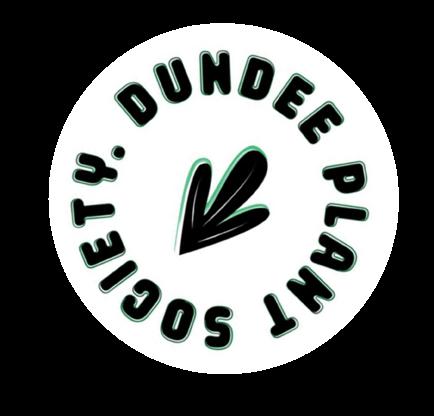


Becoming a new committee member is exciting and a huge achievement, however, on the flip side, it can be pretty scary. With so many roles and constitutional rules to decipher, it’s daunting to try and get everything right straight away and figure out how to run the society successfully by reading the guidelines alone. It can sound simple enough in theory, but putting it into practice can be a bigger challenge. To quote Uncle Ben, with great power comes great responsibility. With great responsibility comes what can be an overwhelming amount of learning.
It can be hard to get into the swing of society life. The potential for conflict and confusion over admin and planning requirements can be difficult to navigate. Often, for whatever reason, committee members can be completely different from previous years and may not be familiar with one another from the get go. This can lead to issues of less-than-seamless communication from the start. The university held society role training in October, which provided an overlook of each role, what is included and what you should ideally be doing.
I think it’s also helpful to have an outline to work with and to know what you have control over, as positions of power can be big roles to take on, and hierarchy within societies themselves can be avoided or amended if each member knows what is expected, what to do and focus on. For presidents, it hosts a section on how to resolve conflict, which occurs naturally. Conflicts can be big or small, as we all differ with our opinions, and can clash. I think as a president of a society, it relieved me to have a guide to follow if any conflict were to arise and how to disarm the situation before it became a major issue. Overall, training like this can be helpful and also lets you meet others from different societies doing the same as you, and you can exchange resources and even make connections for future events. It’s a good concept, as we can have fun and organize events dividing responsibility equally and make our societies the best they can be.

On/Off Campus Words:
54
Holly Higgins, Design: Katy Blair
Words: Hannah Hamilton, Design: Joshua Harris
You’re Not Bored, You’re Boring
‘What do you want to be when you grow up?’
The million-pound question every toddler must grapple with at some point in their nursery life. To say nothing of how toxic it is to reinforce capitalist standards of a career meaning value, it is still an unrealistic question. The implication that you only get to be one thing is outdated.
Whilst it might have been perfectly normal for the generation before us to find one position and stay there, research has shown that even young baby boomers will hold an average of 12 jobs from ages 18-52. That’s a lot of possibility for change. It may sound distressing, lack of stability is a scary concept, but this could be an opportunity to exercise a flexibility and freedom that previous generations were never able to consider. You don’t have to be just one thing.
In fact, it’s better that you are not just one thing at all. When we focus ourselves into developing one area of knowledge or one skill, it’s like putting blinkers on our potential. Who knows what you’re missing out on? Marie Curie was a governess before she discovered Polonium, the world would be at a great loss if she had chosen never to consider another life path.
‘What do you want to be when you grow up?’
The tragedy of this question lies in the implication of there being one way to live your life. If we continue to encourage and reinforce this idea, we confine ourselves to never fully explore the possibilities of our development.
Capitalist society encourages us to forge out a comfort zone and remain there. Routine and regularity are heavily enforced as positive attributes. Consider how our social, academic, and professional lives are governed by the traditional working day. Everything from our early school system to late life care planning encourages us to find one field and stick to it.
When we find ourselves stagnating in a career, academic field, or in our personal lives, it often feels like a failure to have succeeded at that one thing we were meant to do. By engaging in the alternate for even a small portion of our lifetime, we can avoid the banality of a single-track life.
Personal progress is a Sisyphean task, but we do not have to be crushed by it, we are allowed to change.
Opinions
55
Dundee, City of Discovering… What?
On Tuesday 15th November, the Liar Bar celebrated its £300,000 refurbishment with a wine-and-canapé photo op for the great and good of the university, as well as the senior management. The following week DUSA and the University of Dundee emailed us all to announce free breakfasts, a food pantry and £100,000 extra for the hardship fund. They did not announce the fact that all striking workers insist their withheld pay goes directly into the hardship fund, which, due to the 3-month strike by Unite and likely long strike action by lecturers, will probably easily double or treble the million or so the university normally gives out.
The affable Principal joked that he actually had personally funded it. Someone in the audience pointed out that on his £250,000 salary, he probably could have done so. Meanwhile, NUS Scotland figures show that last year
year in a row that Dundee has oversubscribed, and this shows no sign of stopping.
In fairness, these are decisions made in a national and international political and economic regime, not the creation of our university. Our own Vice Principal (International) has not chosen to create this mess by herself, though her acceptance of a salary increase to over £170,000, however, is a conscious choice. You might very well think that such high salaries are incompatible with building trust and respect between students and management essential for dealing with the issues students face; you would be correct.
– it can only be worse this year. We still have international students stuck in hostels because Scottish universities must endlessly chase the precious, exorbitant fees they can extract from international students regardless of whether there is housing available for them. This is the second
University management across the UK have provoked yet another year of strikes following continued attacks on lecturers’ pay and working conditions. Lecturers have suffered 35% realterms cut in pay since the beginning of the 2008 financial crisis, increasing use of casualised contracts that force some lecturers to sign on to Universal Credit in the summer and everincreasing workloads. As students our learning conditions are affected by our lecturers’ working conditions. Higher education is on a dangerous, unsustainable path, and it is to the credit of our educators that they are making a serious financial sacrifice through striking in an effort to protect the sector from a relentless driving down of standards.

Opinions Words: Eamonn Custance 56
“12% of students experienced homelessness”
Meanwhile, DUSA is proud to be a Real Living Wage employer paying a minimum of £10.90 per hour –albeit not until as late as May 2023. However, the student staff still face issues such as insufficient hours. There is significant room for improvement, and it is encouraging to hear DUSA is considering the Fair Hospitality Charter championed by a trade union for bar staff, Unite Hospitality. For many students, DUSA will be their first experience of working. It is essential that they get the best possible working conditions, not just to improve their time at university, but also so they gain the experience and confidence of expecting decent working conditions at future jobs. Until student staff organise and enforce better standards, no doubt the perennial Dunfess post complaining about the management will remain a staplewhich is a shame, because we should be beefing with Abertay and St. Andrews more.
The city of Dundee also has serious problems around inequality. The city saw a small riot in Kirkton just before Halloween, as well as multiple acts of arson culminating in the destruction of the derelict Robertson’s store. We should acknowledge that we don’t know yet what connection these two facts have, but as it’s not libel to blame a so-called ‘profession’, we can, and should, blame landlords. The council leader John Alexander, who grew up in Kirkton, led the lawand-order rhetoric, rather than acknowledging that an area that is, according to the Scottish Index on Multiple Deprivation, the 99% ‘most
deprived’ might have deeply entrenched poverty. But that would require investment in people who live here and can’t be seen in walking distance of the train station. Much better to concentrate wealth in the West End, the city centre and Broughty Ferry!
OK- so far so depressing. Here’s some hope. Dundee likes it tagline the “City of Discovery”. Here’s something we can explore right now: our power. You have far more power, individually and collectively, than you realise. It’s often said students are apathetic, don’t engage with representation, etc. True to a point, but mostly, students have less time than ever to put into changing the world.
Those of us who care about providing opportunities for students to experience the benefit of an empowered student community must make the journey towards our collective power as fun and as accessible as possible.

“These should be some of the freest and happiest years of our lives.”
Opinions 57 Design: Katy Blair
CONTENT WARNING: ADDICTION/DRUG USE USE
It’s been one year, six months, and four days since I made my commitment to sobriety. Give or take a tiny handful of conversations with loved ones, I never discuss it. Sorry I’m demanding two entire pages of magazine real estate in order to do so – and that it’s going to sound like a ‘cool dad’ wrote this article. I’m nearly thirty-two. The onset of dreaded maturity is already well underway.
I lost most of a decade burnt out, compulsively smoking, and failing to meet the basic criteria for being a person. When my tolerance became so high I would experience little or no high, I did not (could not) take a break, so I began to supplement with other things: over-thecounter and prescription medications. Sometime in the back half of my twenties, I realised my anxiety was so severe, and so tied to these substances that I let myself become a shut-in. I was down the hole; I knew I was down the hole; I was miserable, and I was unable to climb out.
Are you down the hole right now? You might not even realise – It can be hard to tell at first, because for the first year or two you spend ‘stuck’, you’re far too busy having fun to realise you’ve developed a psychological dependence. That you’ve not established a clear exit strategy if your substance of choice stops working for you.
Perhaps you have immersed yourself in a social network that reinforces your relationship with said substance. If you fear you’d lose these people, or that you lack another support group, this can become toxic incredibly quickly. They don’t want the worst for you – it’s just what you do together. It’s your identity. If you abandon it, you’re betraying them.
Quick bit of advice: do not, under any circumstances, let it become part of your identity. I wish I could go back to myself from ten years ago and tell him that weed culture sucks: it’s cringe, it’s pointless and it’s boring. These are forgivable sins, but weed culture is also unconsciously designed to perpetuate your habit. Trust me, there are so, so many people whose substance relationships are not healthy, and who are using the culture as a crutch. Build your relationship with a substance on your own terms: do not create a Wiz Khalifa playlist, and keep off the subreddits.
I can honestly say that, throughout the 2010’s I did virtually nothing of importance. That’d be okay if I was having fun or making memories, but as time wore on, I really wasn’t. I was usually alone, dipping in and out of studies and minimum wage work, and had convinced
!
Opinions Words: Stewart Burnett 58
myself I was fundamentally incompatible as a person with others. It was feeding into underlying mental health issues and warping the hell out of them. The mantra was: I’d always be like this, I’d always be alone, and the only way to escape is to go meet my dealer and bury myself under several tons of psychological cement. Rinse, roll, and repeat every single day.
There is no one-size-fits-all solution to sobriety, but for me it took a mixture of factors: the death of an immediate family member, a spell of travel, and finally, a period of time during lockdown staying with a gang of hippies to push me over the edge. When I climbed onto the bus to go home, I left everything – even my tobacco – with them. Not everybody is going to have these kinds of opportunities (although, I must emphasise, I was broke), and nobody’s path is the same, so I don’t think it matters much how I did it. Wherever you choose to draw the line is arbitrary. What matters is finding the conviction to mean it.
Recently, I learned that it’s okay to feel nostalgia for those years. When I pass an open window in a block of student flats and breathe in the glorious reek, or bump into somebody from the early years of the habit.
After all, before it all became rather bad, it was actually pretty great. I remember laughing – a lot – and plunging myself so deep inside my favourite music that I could still feel it inside me the next morning. Losing that was bittersweet, and I can say that without endangering my sobriety. My life is transformed: I’m a salaried writer, sitting a Master’s, and my life is filled with love every single day.
Also, I still have a couple of beers from time to time. If we meet, and I’m holding a drink, do not cite this article. My relationship with meat is equally spotty. Sometimes I even put my recycling in the wrong bin. Come at me.
One last thing. Don’t ask me how much I spent, or tell my mum I wrote this article. I’m not ready to share just anything.
Opinions 59
Design: Daniel Somoghi
Third Time’s the Charm



It’s never easy deciding what course you’re going to study at university. It’s terrifying to make that commitment at any age, never mind in the last year of school, like I did. It’s hard to adjust to uni life. Making new friends, adjusting to unfamiliar content, and potentially embracing a whole new city away from home. It can be overwhelming, and the negative feelings can be exacerbated by the stress of having chosen the wrong course. Unlike school, you can’t change class or subject at the drop of a hat, as the application process and matriculating can be time-consuming process, especially when you’re applying for student funding or accommodation on top+. It’s a serious choice to change direction once you’ve already started. It takes a level of bravery to pursue something else, whether you’re first year, third, and so on. It’s not an easy decision, but sometimes it can be the best decision in the long term.
Changing course is not only difficult to navigate systematically, it’s tough emotionally, due to the degree of scrutiny around being indecisive
and thinking outside of the box. Some, like lecturers, parents, and other family members, may not see it the same way. Starting fresh can trigger all sorts of responses, including congratulations- but when it comes to the idea of dropping out, responses of anger, confusion and annoyance can occur, as parents and even lecturers may not understand your decision. Changing degrees is a big deal, but we don’t need to view it in such a negative manner.

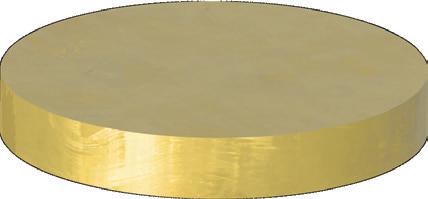
Think of it this way: why would you spend your life doing something you don’t have the heart for? It might be more emotionally fulfilling to put your all into something you want to make a career out of and spend a lifetime doing. It’s more important to prioritise your mental health and satisfaction with your course over the opinions of others. We are encouraged to do so in every other aspect of our lives, why is the line drawn when it comes to career choices, with some being valued over others? Whether you study medicine or art, your happiness and dedication to your degree is all that matters in the end, don’t let anyone tell you otherwise.
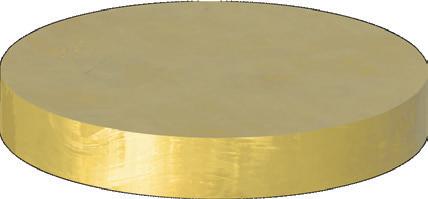
Opinions Words:
Higgins, Design:
Blair 60
Holly
Katy
Privilege in Education
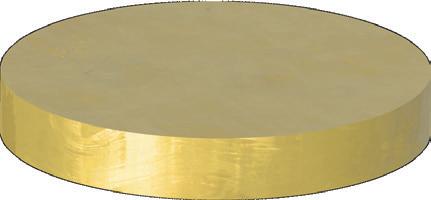


Everyone works hard to get into university. However, what is not always acknowledged is the inequality once we all get here. Amongst the privileged students - those who were privately educated, or whose parents were able to afford extra tutoring, whose parents may have received higher education themselvesand working-class students, often the first of their family to attend university.
Background matters- it is important to who you are and what your university experience is going to be like. That is not to say that working-class students do not excel in the same way, our journey to get there is just undoubtedly harder. This can be a hard pill to swallow for those who have had the luxury of, especially, a private education, but it’s so important to realise that accepting this privilege or engaging in the conversation is not a means to dimmish their hard work either: there are many privileged individuals who do not work hard and don’t go on to achieve what others do. But at a state school, especially those in deprived areas, with less resources, much larger class sizes, and over-worked teachers, we don’t have the same expectations for ourselves. We have to work so much harder to get into university, and sometimes expect much less for ourselves.

















If you’re the first in your family to go to university, your family may not be able to help you apply in the first place, or help you
with university work itself, in the same ways parents with a higher education can. Being less accustomed with small numbers of people in a class, and teachers that openly engage in conversation to teach, rather than loading up a PowerPoint because there’s no way you can teach 30 pupils in a classroom by having a ‘discussion’. Not to mention, that many valuable studying and learning skills are gained through private tutoring, not something many working-class families can afford for one class, let alone several. There is an innate confidence given to and learned in private schools, making it more natural for these students to speak up and execute their opinions and thoughts in a way which we are not always taught to do in state school. All education experiences are different, and this is not a one size fits all situation, but in the name of generalisation, it is indisputable how much harder it is to succeed at such a high degree if you haven’t been given the privilege of confidence.










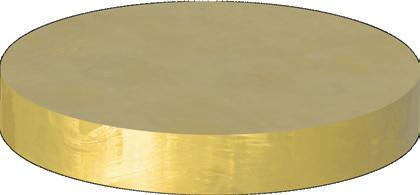
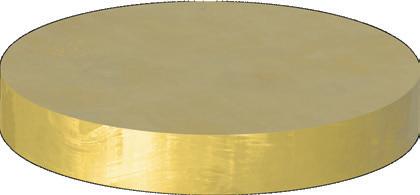


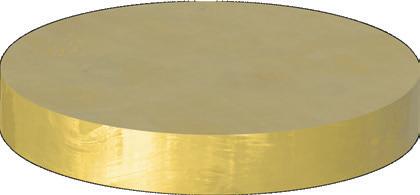

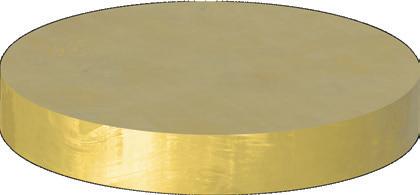
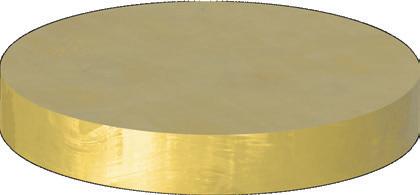

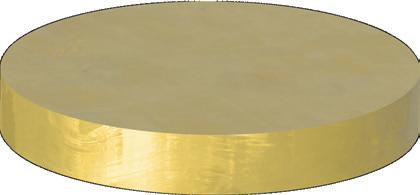
Opinions 61
Words: Niamh O’Donnell, Design: Fiona Howard
How can you be certain a label is right for you? Is it something you know instinctively, a word that says yes, this is me, a moment in which everything seems to fall into place? That’s what I thought for the longest time – that if I didn’t feel that immediate connection, it meant I had to keep searching. That one day I would wake up, or something would happen, and I would just know. For some people that may have been the case, but it decidedly wasn’t for me. Instead, I spent years and years second-guessing my sexuality, until finally my friends helped me decide on a label that could work for me. The moment I had been building up in my mind for so long ended up rather anticlimactic, and I couldn’t have been more grateful for it.
The thing is, figuring out your sexuality is a journey without an end. So, you’ve found a label that suits you; the path of self-discovery doesn’t stop there. Now you need to learn to embody your newfound identity and make it yours, like a pair of new shoes you need to break in before they can really fit. This can be done privately, by things such as mentally referring to yourself by your new label, or by exploring its online community. Even watching a show or movie which includes characters that share your identity can be research. This can lead to two paths: it affirms what you already thought and makes you feel more secure about your sexuality and/or gender, or you conclude that this label might not be the right one after all. Either way, no harm is done, and you’ve learned a bit more about yourself.
In my experience, the idea that at some point ‘everything just makes sense’ is misleading. My journey in figuring out my sexuality was less like all the pieces of a puzzle falling into place and more like gradually discovering parts over the years. At some point I found enough to piece together the puzzle’s frame, and that’s when I took a leap of fate by guessing what it could be. In truth, I’m still finding pieces now. I don’t think sexuality or gender is a puzzle that can be completed, and that’s something I’ve only recently begun to come to terms with. That doesn’t mean I can’t find comfort in the labels I currently inhabit;
there’s a special kind of self-acceptance they can provide, and often they help you come to terms with who you are as a person. More than that, they can help you understand why you are the way you are. I’ve lost count of all the time I’ve looked back at a childhood memory with a sudden sense of enlightenment, recognising aspects of my current self that were still developing at the time.
But what if I turn out to be wrong? First of all, you can’t truly be wrong, because there is no right answer. There is no ‘true identity’ hidden within you, waiting to be unlocked, no ideal version of yourself who is 100% confident in who they are. There is no finish line beyond which you will never doubt your identity again. We as people are constantly shaping ourselves and being reborn, and just because our past self’s identity doesn’t correlate with our current one, doesn’t mean we were wrong. That identity, the one that you once claimed as our own, may have been the one that fitted best at that time. But you have grown and changed as a person, we all do so constantly; isn’t it only natural that our labels can change with us?
Even so, it can be discouraging when you can’t seem to figure out what label is yours to claim. Some people don’t mind changing it as they too change overtime, but there are others who feel more comfortable using an umbrella term like ‘queer’. In doing so, they acknowledge the fluidity of their sexuality and refuse to restrict themselves to a set definition. With how sexuality is constantly monitored and scrutinised, I can’t fault them. Part of me wishes my younger self had known that was an option, that I didn’t need a label – it would have saved me years of self-doubt and ‘Am I Gay’ quizzes. But it shouldn’t matter whether someone goes by a specific label or a broader term, both instances are perfectly okay and should be accepted without need for further explanation. A label is meant for you, not for the world, even if it feels that way at times. In the end, the only one who can ever completely define you is you, and one or two words will never be enough to capture all that you are and all that you will ever be.
Opinions Words: Lara Luyts 62
Labels and their (in)significance
Opinions 63
Design: Fiona Howard
Words: Harry Anderson





Science & Technology 64
Design:
Callum Scott
Into the Depths: The World of Saturation Diving
Imagine being stuck in a small metal chamber for weeks on end, only leaving to work in pitch black waters at crushing depths. This seemingly nightmarish scenario is the standard workday for the little known (and incredibly dangerous) occupation of saturation diving. Far from the comparatively shallow world of recreational diving, saturation divers descend more than a thousand feet below the surface to work in one of the most hostile environments known to man.
One of the dangers they face is decompression sickness, also known as ‘the bends’. When a person is at the surface, air is breathed as per the norm, but when at depth, chemically inert gases, like nitrogen, gradually dissolve into one’s bloodstream. This is harmless while at depth, as the pressure keeps the gases dissolved, but as you ascend, the gases decompress and begin to form bubbles in the divers’ body. Unimaginably painful, and extremely serious, as the bubbles forming in the brain, can cause life-impacting strokes, with even death possible. To survive such lethal chemistry, specific procedures are followed, such as slow ascension to the water’s surface, to let the gases steadily desaturate from the diver’s body. This seemingly simple method belies the amount of time necessary, with even short, deep dives requiring several hours to avoid the worst effects. Helox, a specific mixture of helium and oxygen, is utilised as pressurised oxygen becomes lethal at the depths the diver reaches. This incredible demonstration of chemistry is only slightly dampened by its effects on the human vocal cords; any amount of time breathing Helox and your voice becomes something akin to Donald Duck.
To overcome the lengthy chore of pressurising and depressurising, experiments were done to create and operate the first Sea Lab, a metallic container that sat at 192 feet below surface to act as the home for what were essentially the first saturation divers. Prior experiments in the 1930s showed that divers’ bodies became fully saturated with these inert gases and, provided they stay at whatever depth they are accustomed to, this allowed the divers to stay pressurised for an indefinite period. With the pressurised undersea containers, the divers can work and live without the constant need for pressure adjustments. Not to say that they live luxuriously, however; living quarters are almost always cramped (to reduce the risk of implosion and depressurization), often having the space of the average restaurant booth, shared with 5 other divers.
Seeing the conditions that saturation divers work in would be enough to deter even the most seasoned of mariners, yet the compensation for their labour puts said divers in similar financial situations to doctors or lawyers, earning between 30,000 and 50,000 dollars a month (on average). Predominantly performing maintenance, though at a scale and specialization that the term ‘maintenance’ fails to capture. ROVs (Remotely Operated Vehicles) don’t have the finesse or adaptability of human divers, necessitating this incredible, yet almost unheard-of job. Down in the pitch-black depths people work away, living in conditions that would drive the average person mad; it seems a shame that this occupation is a relatively obscure one at best. Science & Technology 65
PTSD, psychoactive substances, & brain plasticity
CONTENT WARNING: DRUG USE
Posttraumatic stress disorder, or, PTSD, is a mental health issue resulting from an intensely stressful event in a person’s life. Symptoms range from mild to debilitating, manifesting under four main clusters: the re-experiencing of traumatic events in flashbacks or intrusive thoughts, compulsive avoidance of triggers, cognitive symptoms like depression, and hyperarousal during otherwise innocuous situations.
Before PTSD had been recognised as a medical condition, it held tentative associations with narcotics. Amphetamines fuelled soldiers during the World Wars, making them more “malleable”; as historian Nicholas Rasmussen wrote, drugs “made men fight harder, and the men liked it”. Many veterans suffered deep psychological trauma because of the violence they saw – violence that they sometimes inflicted – and upon returning home, many fell into opioid dependence to cope.
Psychiatry has come a long way since, and it’s now more commonly understood that veterans make up just a fraction of those living with PTSD. Professional help in the form of ‘trauma-focused’ cognitive behavioural therapy (CBT) is also more easily accessible. During intense 60+ minute sessions, people with PTSD recount their traumatic memories in full detail and, with guidance from a psychotherapist, develop strategies to challenge their unwanted thoughts and behaviours. This can occaisionally be enough to help the individual reintegrate and recover.
However, traumatic experiences leave their mark on the brain. In stress-related disorders like PTSD, there is well-replicated evidence of abnormal connectivity in synapses – the gaps between neurones which co-ordinate signals –as well as reduced thickness of the prefrontal cortex, which regulates executive control.
It therefore makes sense how a traumatic experience can have such a dramatic effect on an individual. Physiological damage caused
by trauma makes the brain more likely to proceed with inappropriate decision-making, puts the brain in an exhaustingly constant state of hypervigilance, and can lead to noticeable changes in personality.
In many instances it is not enough to rely solely on CBT. Whilst some may additionally be offered slow-acting antidepressants, further pharmaceutical options for PTSD are limited. Even at the pre-clinical research stages, contemporary studies are lamenting the lack of research for new drug development, with Abdallah et al. (2019) stating that we are experiencing a “crisis in the pharmacotherapy of PTSD”.
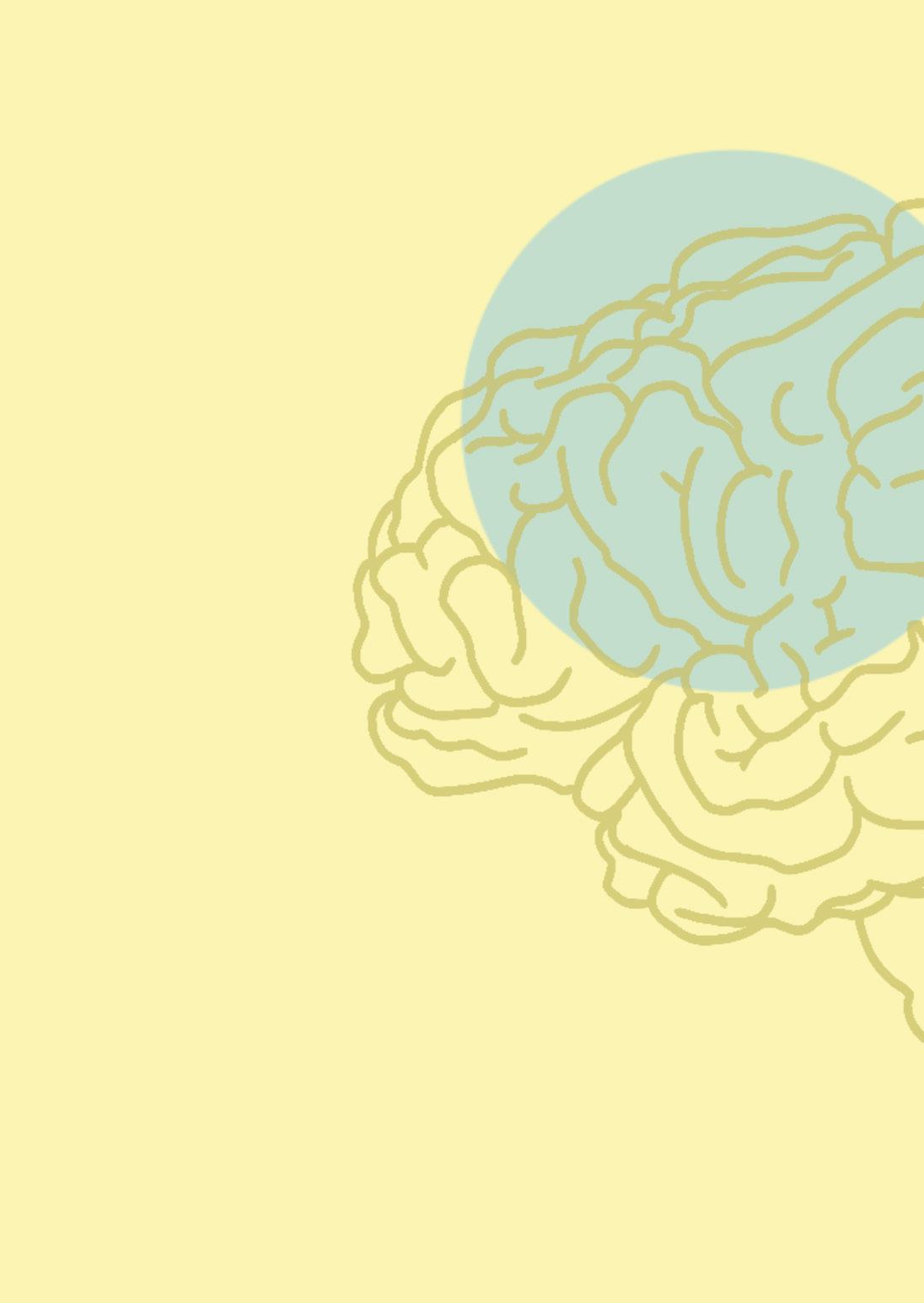
Science & Technology Words: Mary Tozer 66
!
Although trauma fundamentally changes the brain, other experiences can ‘re-wire’ it back to its normal state. Experiences with recreational drugs often worsen the onset and healing of PTSD when taken in an unregulated manner, but scientific literature is now questioning whether we could find an unlikely treatment in ketamine: a Class B narcotic, a veterinary tranquiliser and, according to the World Health Organisation, an “essential medicine”.

Due to ketamine’s status as an illegal drug, or the commonly held belief that it’s exclusively for animal use, some may be surprised to learn that ketamine is used frequently in emergency medicine.
Ketamine is used to relieve pain, treat asthma, and provides fast-acting relief for those with otherwise treatment-resistant depression. For all these pathologies, ketamine works in under 40 minutes. Those who have experienced the effects of ketamine, will not be surprised that it can utilise the brain’s neuroplasticity to change the user’s outlook and mood.
Recent research which revealed PTSD to be a “synaptic disconnection syndrome” has uncovered new pharmacological pathways to investigate for drug targets. Ketamine has been shown to target the N-methyl-D-aspartate (NMDA) receptor in neurons, resulting in prefrontal synaptic gain in animal models of PTSD within 24 hours. Essentially, this helps reverse the loss in functional connectivity in the brain that occurs in PTSD. In humans, early studies show that ketamine therapy results in rapid normalisation of functional connectivity, and increased hippocampal volume, again within 24 hours.
A 2021 study using veterans with severe and chronic PTSD investigated treatment using ketamine infusions. The treatment saw improvements across three of the four PTSD symptom clusters: intrusions, avoidance, and negative alterations in cognitions and mood. However, these improvements were only maintained for a median of 27.5 days.
If you Google ketamine, you’ll find article titles ranging from “Why Ketamine Is The Best Drug In The World” to “If You Do Enough Ketamine, You Might Piss Blood”. Its perception in the wider public is controversial, and a little unsavoury. However, for those experiencing treatment-resistant PTSD, ketamine might just be a lifeline. Growing scientific evidence exemplifies that ketamine is an effective drug which provides near-instant relief from many symptoms. Whilst the brain has evolved to make us frightened of things that can harm us, PTSD exploits the brain’s ability to grow and change – its neuroplasticity – causing deeply unpleasant symptoms such as intrusive thoughts and hyperreactivity in innocuous situations. Ketamine is a treatment which literally re-grows, re-moulds, re-wires the brain, making it feel normal again, even just for the meanwhile.
Science & Technology 67 Design: Constance McRobert-Smith
Solar System Colonization: Beyond Earth
In recent years, many problems such as global warming, war and environmental damage have caused many to look further afar for a solution to their problems; in particular, beyond our planet. The concept of space colonization has exploded in popularity in recent years, with the idea explored by sci-fi media and even prominent figures such as Elon Musk advocating for it. The idea of colonizing our solar system has been toyed with by physicists, engineers, and everything in-between for decades, but just how viable is it, and what destinations are in mind for our new future homes?
The most prominent and famous of this new real estate is our neighbor the Moon. It has been at the forefront of thought and exploration for decades with NASA’s Apollo program, but colonization has been rejected. That is, until now. Nasa recently started work on the Artemis Programme, a series of missions, starting with exploration and the establishment of a gateway station as a stopping off point, leading up to moon landings and the eventual establishment of a lunar base. This means by next decade the moon could have its very own colonists, each
with the job of conducting further research on the moon and how to survive there, until eventually colonists will be able to stay there indefinitely. While this looks promising, there are drawbacks. Due to the nature of the moon, for people to survive there, they will be stuck in lunar bases only able to go on the surface for limited time with space suits. It’s also extremely expensive being able to transport new supplies back and forth. This combined with the limited space available in moon bases, it is likely that the new housing will not be affordable and reserved only for the rich and/ or important. So, unless you are outrageously rich, and love spending all your time inside, this might not be for you.
However, there are other new properties out there being eyed up, including the enticing red planet of Mars, perhaps even being the best option, thanks to the day-night cycle being remarkably close to Earth’s. In recent years, the idea of Martian exploration and colonization has skyrocketed with Space X and Elon musk announcing their interest in landing on and exploring the planet. They even have a plan with Mars being their first step to “make
Science and Technology Words: Matthew Curry 68
humanity multiplanetary as well as designing “starship” - a spacecraft capable of sending colonists all the way to Mars. Even theoretical plans exist to terraform it, changing the atmosphere to make it habitable for humans; one plan, ironically, is to build factories to pump out greenhouse gases to create an atmosphere that can deflect solar radiation. Another is building huge orbital mirrors to reflect the solar rays that destroy the planet. However, all this is beyond our current capability, and to achieve this, it would take at least hundreds of years; time we don’t have.
However, fear not, we still have other options, including our sister planet Venus. While it may seem too hot, harsh, and unforgiving for us to live on, just like Mars it is a fixer upper. Many ideas have been thrown about on how to terraform Venus, some saying it’s a better candidate than Mars, with hospitable gravity levels to prevent bone decay from lack of weight on bones, and an atmosphere to stop solar radiation, with plans for terraformation, to reduce the atmosphere’s toxicity and render it breathable. However, the most viable idea seems plucked straight from science fiction; Aerospace engineer Geoffrey Landis suggested the building of sky cities, like in Star Wars. This would involve building a floating city 50km (approx. 31.07 mi) above Venus where the air is breathable, comparable to earth. Yet, like Mars, this idea is so far beyond our abilities that by the time it was feasible, it’d be too late.
Beyond this there are few options left, with the moons of Jupiter and Saturn, such as Europa, Titan and Ganymede being a mixture of too far away, freezing cold, or possessing no atmosphere, making survival impossible. So, at the end of it all we are left with two options: leaving our solar system and travelling lightyears to get somewhere, or staying here on Earth. The chances of the Earth creating a species like humans was 1 in 60 billion and we have perfectly adapted to survive on it, whilst adapting planets to us still resides hundreds of years in the future, too late for our timeline. So, while we all look up to the stars for a new home to settle down, there really may be no place like home.
Science and Technology 69
Design: Joshua Harris
Robot Bees and the Future of Pollination
We are surrounded by technology and use it daily – it’s safe to say it’s convenient, and increases the quality of life for many of us. The thought of technological advancement is an exciting prospect, but for some it also brings feelings of uncertainty. This is illustrated quite well in Black Mirror, a series written by Charlie Brooker. It is no secret the creators of the show were inspired by technology, depicting a dark future of humanity’s greatest advancements. But just how close are we to some of those futuristic solutions? Let’s explore the reality of the robotic bees portrayed in Season 3, Episode 6 - ‘Hated In the Nation.’.
The idea of small–scale flying robots has been around for well over 20 years, but the first attempts at creating a functional robotic bee began in 2009. This ‘RoboBee’ has been developed primarily in hopes of assisting disaster relief and pollination efforts. The Wyss Institute at Harvard describes the three main components of building an operational RoboBee as Body, Brain and Colony. For Body, the miniature size prevents conventional construction, pushing the development of flat sheet folding, a technique akin to origami. The creation of the Brain and Colony organization was similarly challenging. The emphasis was put on recreating bee behavior, with the robots freely adapting to changing environments whilst also being able to organise into one swarm . Many improvements have been made over the years, most notable being the addition of artificial soft muscles, allowing for more flexibility. Although the RoboBee will not be released anytime soon, the new technology developed thanks to this project will undoubtedly be advantageous in other areas.
There has been a lot of speculation on the potential use of robots as pollinators, following the rapidly declining numbers of bees. A quote from Bee Willson sums it up perfectly: ‘Every new technology represents a trade-off: something is gained but something is also lost.’ Advancements made with projects like RoboBees are undoubtedly invaluable, but many speculate it could ultimately lead to bee displacement and extinction. However, they also have the potential to preserve bee populations. Mechanical beekeepers, and bee alternatives, are able to analyze hive behavior and register environmental changes, helping bee populations survive. Ultimately, the implementation of such robots is a complex issue, but preserving the environment should continue to be at the heart of the conversation.

Science & Technology Words: Oliwia Mruk, Illustration & Design: Chloe Dickson 70
Words: Aditi Atmasidha, Design: Fiona Howard
A Game of Shadows!
Proteins make up fifteen percent of our body, and the scientific quest to decipher their structures is an ongoing mission. For the longest time, we have viewed proteins alike “a chain of beads”, but in recent times, if one were to pick up a scientific journal, or even a news story, one would encounter complex, twisting chains configured into unique folds which give way to life! But how did scientists get to this organised mess?
Our journey starts with X-ray crystallography! The proteins that need to be deciphered structurally cannot be seen using light microscopes, as lights wavelengths are longer than even the largest protein structures. Now, imagine that you need to separate poppy seeds from rice; an obvious solution would be to use a sieve. With holes of a suitable size, the poppy
seeds will fall through, leaving behind the larger grains of rice. Such is the case with X-ray crystallography as well!
X-rays are 1000 times shorter than light waves and form the sieve in our experimental setup. When X-rays are fired at a protein crystal –wherein multiple molecules of the protein of interest are orderly arranged – where they reflect off and scatter upon encountering a part of the protein of interest. This scattering is recorded, where complex mathematics can then be utilised to decipher the protein structure.
The first protein structure to be resolved using this was that of myoglobin weighing at an atomic weight of 17kDa! The technique is powerful; already more than 100,000 protein structures have been
determined. Nevertheless, there are multiple drawbacks, such as the difficulty in finding effective solvents for the process. The most prominent issue, however, is the challenge of making crystals out of membrane proteins, which compose 50% of a cell wall, and a staggering 75% of mitochondrial membranes!
These percentages back then represented the scope of the unseen proteins in the landscape of crystallography. This eventually led to a need for new techniques to combat such drawbacks, and yet again, the scientist began from scratch to unfold a new technique – to renew their perspective of structure determination! Thus began the journey of a new technique – the journey of Cryo-EM!
This article will be continued in the next issue of The Magdalen Magazine!
Science & Technology 71
VIVE I
Remembering Vivienne Westwood
Vivienne Westwood was a spearhead in the punk fashion movement. Her contributions to the world of fashion changed the way that clothing can be perceived: how we can the avant-garde, the risqué, the controversial, the sexual, the wonderfully weird in garments that we can wear every day.
Westwood started her journey as a “workingclass girl”, unsure as to how she could belong in the world of art. When she opened the boutique SEX with ex-husband Malcolm McLaren on the King’s Road and debuted her designs for the world, she came into the public eye and her career began to take off. They catered to punks, and she viewed the movement as a way of “seeing if one could put a spoke in the system”, which was reflected beautifully in her designs. Her work’s way of incorporating fashion with her ideals was a powerful way of bringing attention to issues bigger than ‘just’ beauty. “Support Junior Doctors” t-shirts, “You think you own the world” smocks, and, of course, the CAAT “Do Not Buy A Bomb” message that she spread on her 80th
birthday are examples that come to mind. Her way of incorporating the overall elitist world of high fashion with political propaganda showed her defiance and unwillingness to allow the status that she found herself with to change who she was at her core.
Her shows were always undeniably stunning. Naomi Campbell’s infamous tumble in fall 1993 (no doubt due to the impractical yet beautiful nine-inch platform heels), the 1994 fall show’s plastic bag hat, ruffle sleeves in 1981 that found their way quickly into mainstream fashion with puffy shirts and swashbuckling attitudes. The name “Vivienne Westwood” is synonymous with edgy tartan and casually worn pearls and her catwalks are what brought these to the people, as well as her stores where ready to wear pieces are available to be enjoyed by everyone. Her items’ relevance in popular culture being worn in Emily in Paris, Sex and the City and by the Sex Pistols, amongst others, gave her designs the chance to be seen by those who don’t seek out fashion shows, whilst never going unappreciated.
8 April 1941 – 29 December 2022 Feature
72
Words: Roshni Baillie
ENNE
Born Vivienne Isabel Swire in Cheshire in 1941, she started a jewellery and silversmith course at the University of Westminster, but ultimately left after just one term due to her belief that her working-class background left her unsuitable to partake in fashion and art. She worked as a primary school teacher, still selling the jewellery that she made at a stall on the Portobello Road. She married Derek Westwood in 1962 in a dress that she made herself, and gave birth to her first son, Benjamin, the following year. She continued to teach until 1971, and in this time she had divorced Derek Westwood, and she created clothes on the side with her partner Malcolm McLaren, whom she married the same year. They had Westwood’s second son, Joseph Corré, the co-founder of Agent Provocateur, in 1967. She went on to marry creative director Andreas Kronthaler in 1992, whom she remained married to until her recent death. She remained, of course, politically active throughout—her 1989 Tatler cover was perhaps this writer’s favourite moment of her political defiance. Dressed as Margaret Thatcher, the cover donned the caption “This woman was
once punk”. And Vivienne Westwood will forever be punk.
On a personal note, Westwood is who drew me in to fashion. I bought a pair of white Freed Boots at a much-discounted price (thank you, Bicester Village) and felt included in the world that I loved. Vivienne Westwood’s designs have resonated with me, as well as so many who have had the pleasure of feeling young and rebellious during her lifetime. Her messages of love and liberty will resonate for many years.
Feature 73
Design: Katy blair
Creative
Dani McFawns Katy Blair Fiona Howard Editor-in-Chief
Directors Senior Team
Ellie
Munro Bronte Chalmers Maria Georgieva
Website
Senior
Social
Illustration
Creative Team Acknowledge
Ivan Amigo Rachel Goodman Administration Manager Managing Editors
Manager Senior Feature Editor
Editorial Team Ada Ung Lucas Ferguson Maria Touloupa Lewis Elks Nick Morton Chloe Dickson D. Pryke Thomas Gracie Whitehouse Jack Stamp Jillian Mendoza Photography Team
Media
Team
ments
Section Editors & Publishing
Creative Writing


Georgi Zhechev
Arts & Entertainment Current Affairs
Arrowyn Williams
On/Off Campus
Emma Sturrock
Catriona Pritchard
Lifestyle
Roshni Baillie
Opinions
Cameron Doherty
Science & Technology Publishing
James McLeish
The Magdalen is published by Dundee University Student Association (DUSA).
Cover Illustration Credits
Jack Stamp
Issue #98 Cover is by one of our very own illustrators: Jack Stamp. Thank you, Jack! ❤

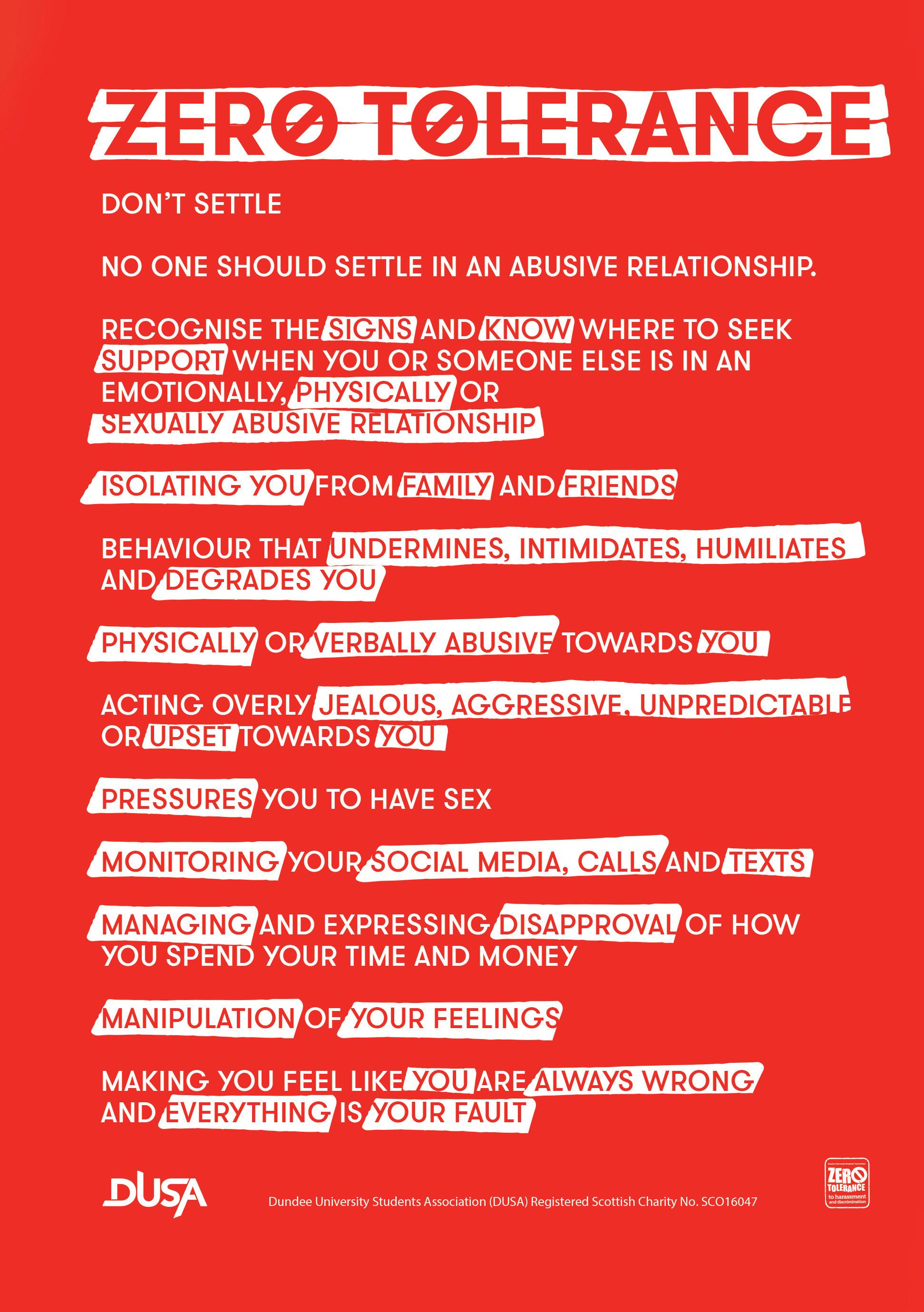

@themagdalenmag The Magdalen Magazine with us online! Connect Join our team! If you're a UoD or Abertay student and have a passion for design or writing, we’d love to hear from you! The Magdalen Magazine @themagdalenmag www.themagdalen.co.uk
3101 JanuaryApril
Upcoming Events
Uncertain Territories: Women and Nature
Check out the latest exhibition at the Tower Building, celebrating a variety of women artists and scientists from Dundee and beyond who have explored the natural world and left tangible traces through the artefacts, specimens and artworks in the University of Dundee Museum Collections.
04
February
One Direction: The Club Night
Head to DUSA and enjoy all of your favourite 1D tunes, plus the solo releases after the devastating break up.
March History Society Ball
11
Join the History Society at the Apex Hotel for their annual ball! Contact HisSoc directly for ticket information.

































































































